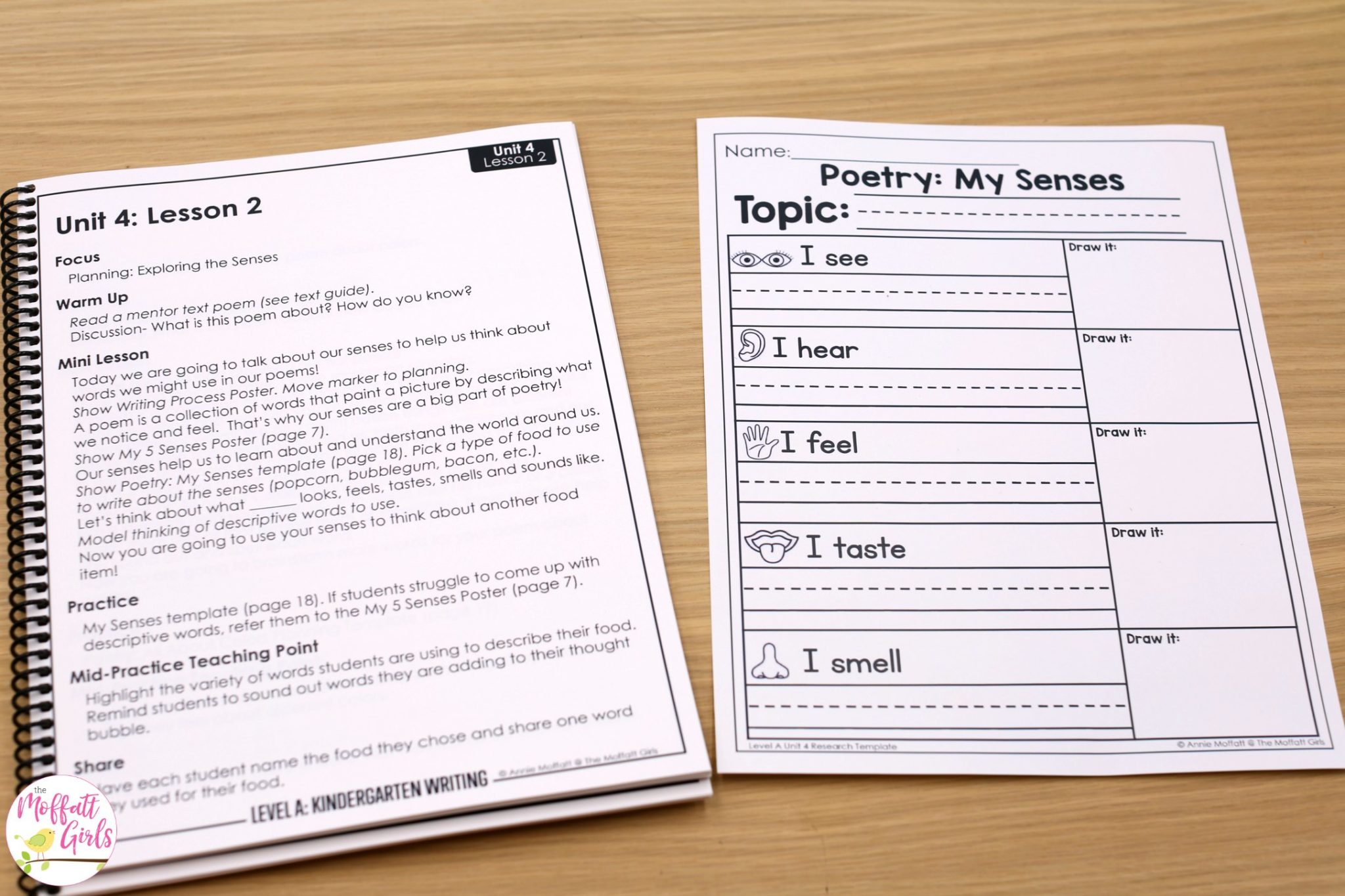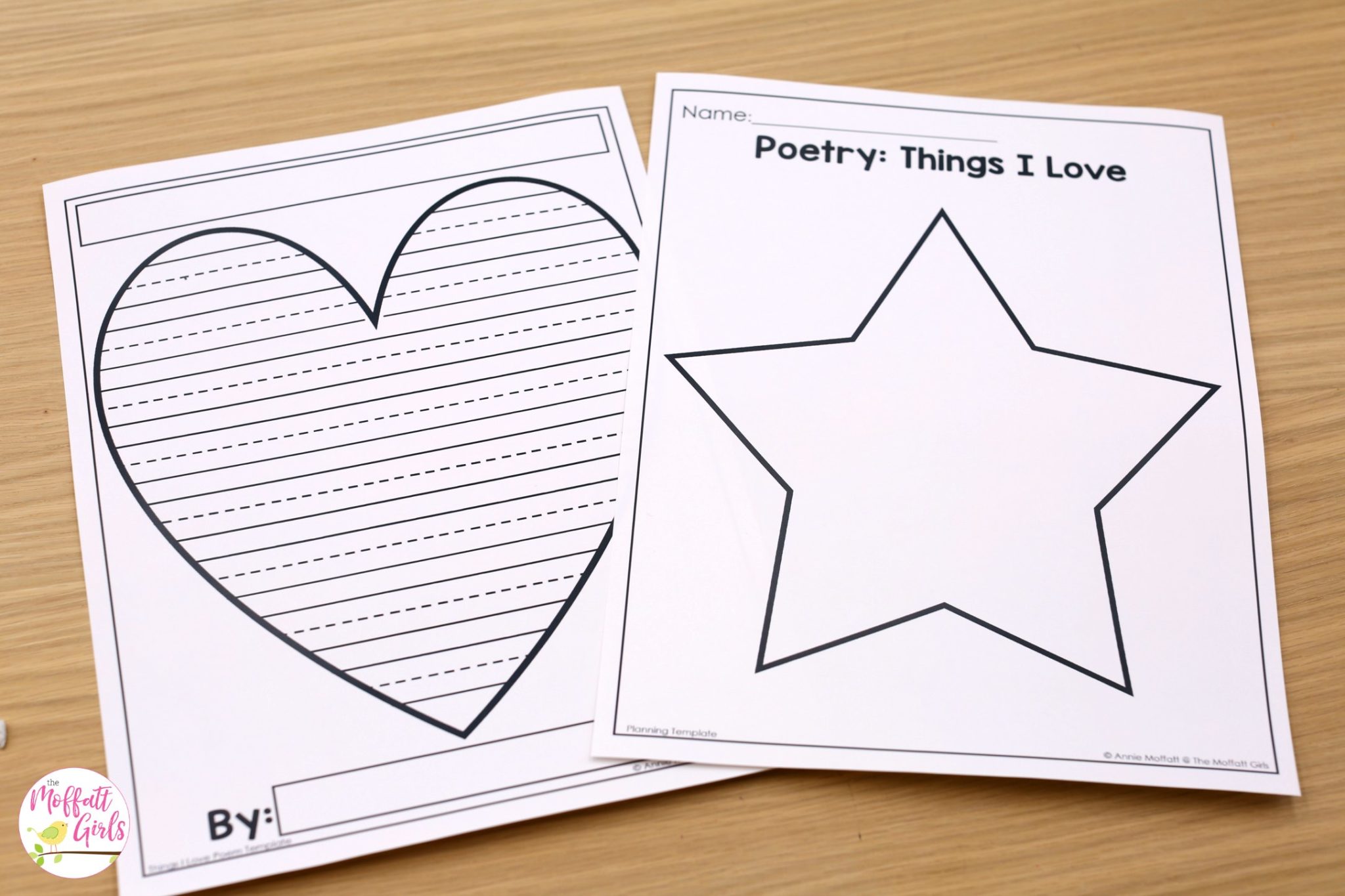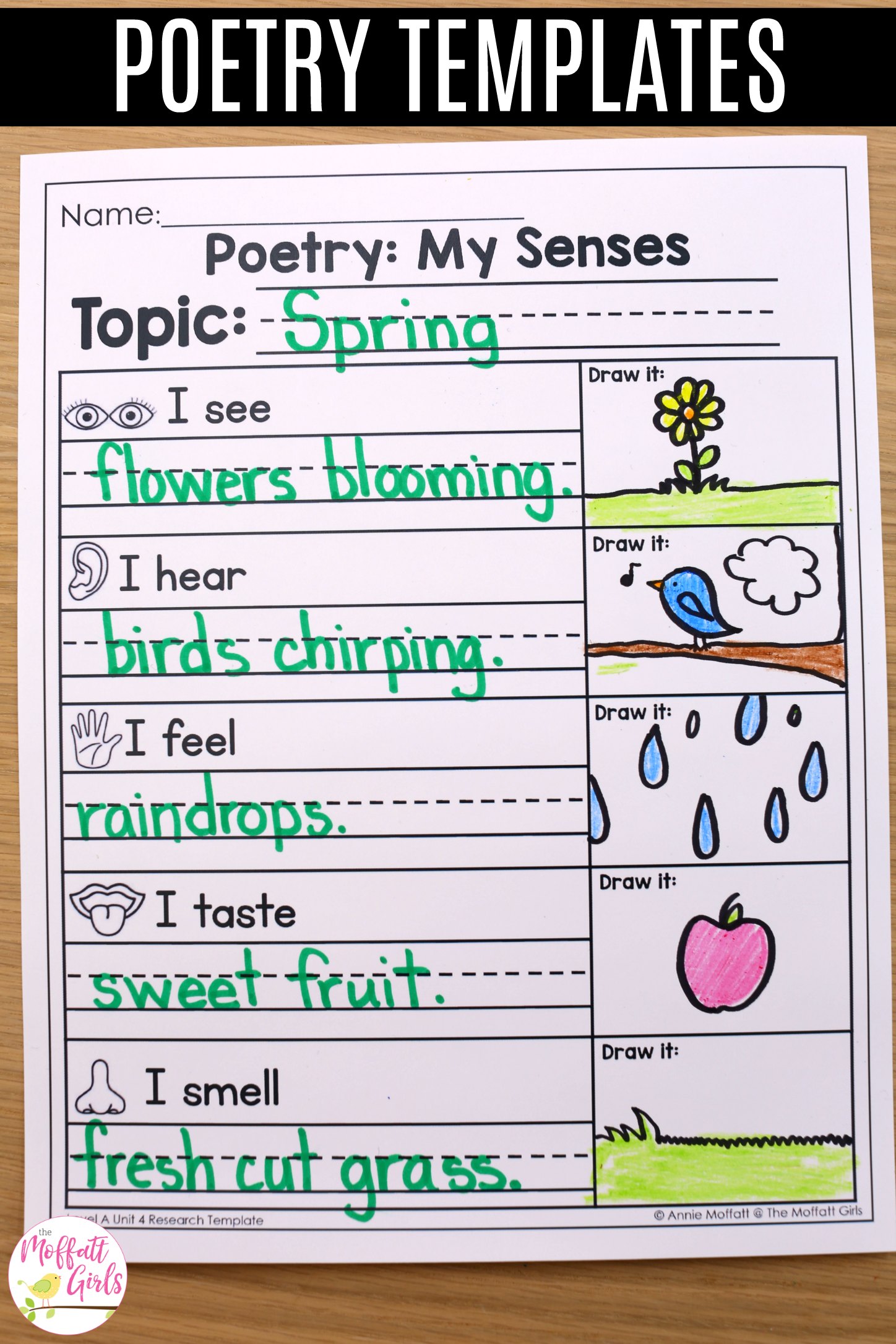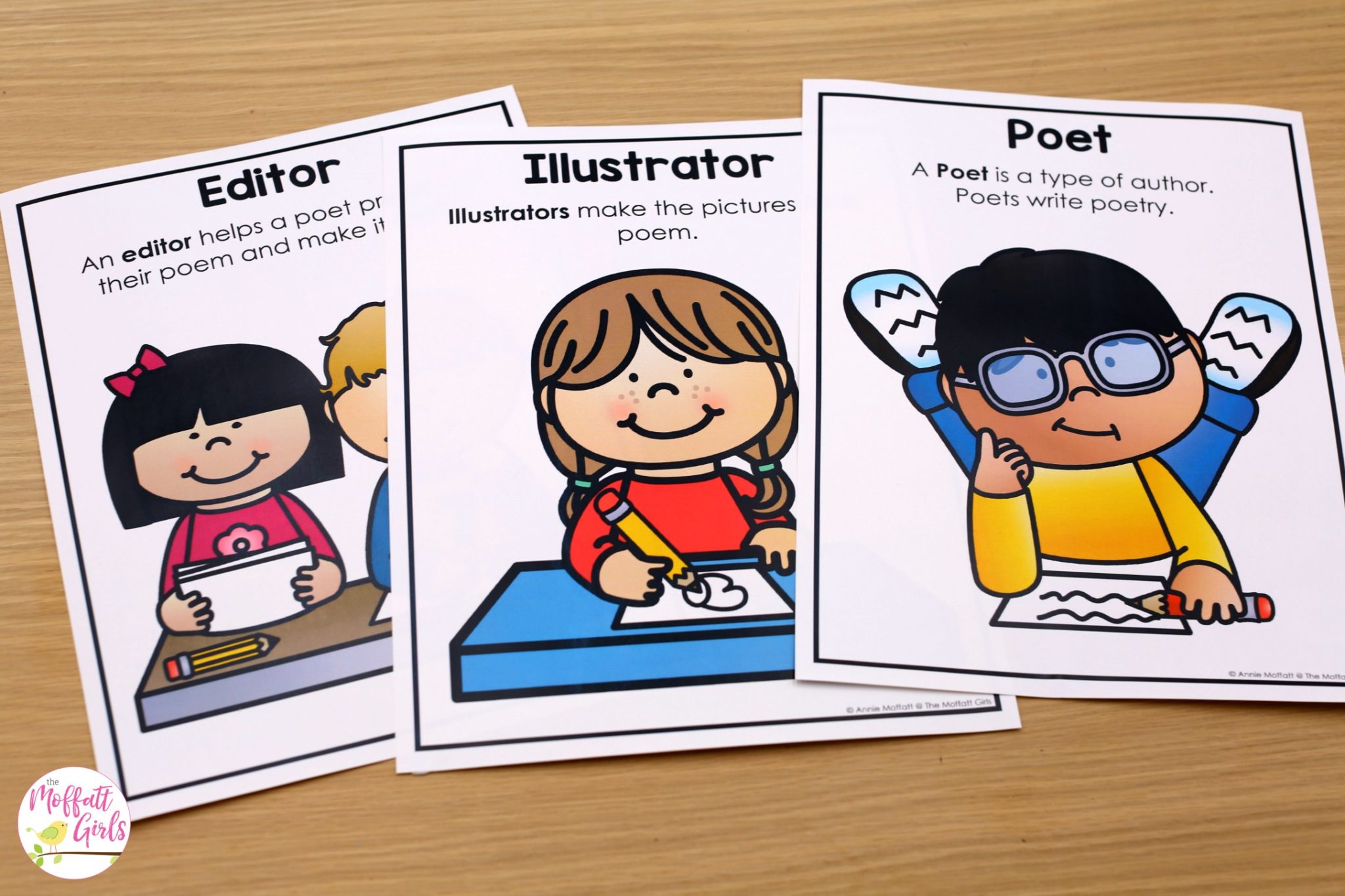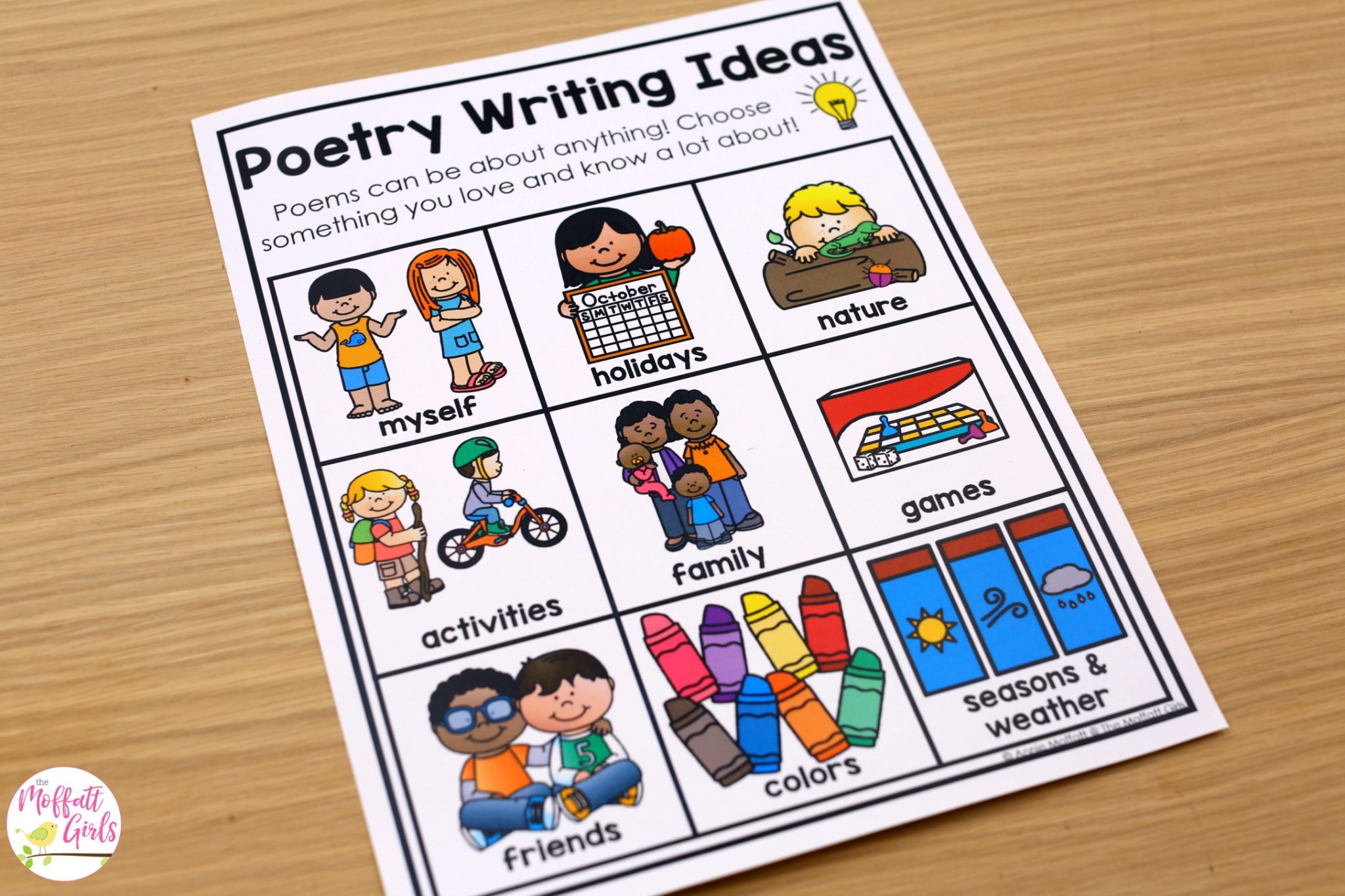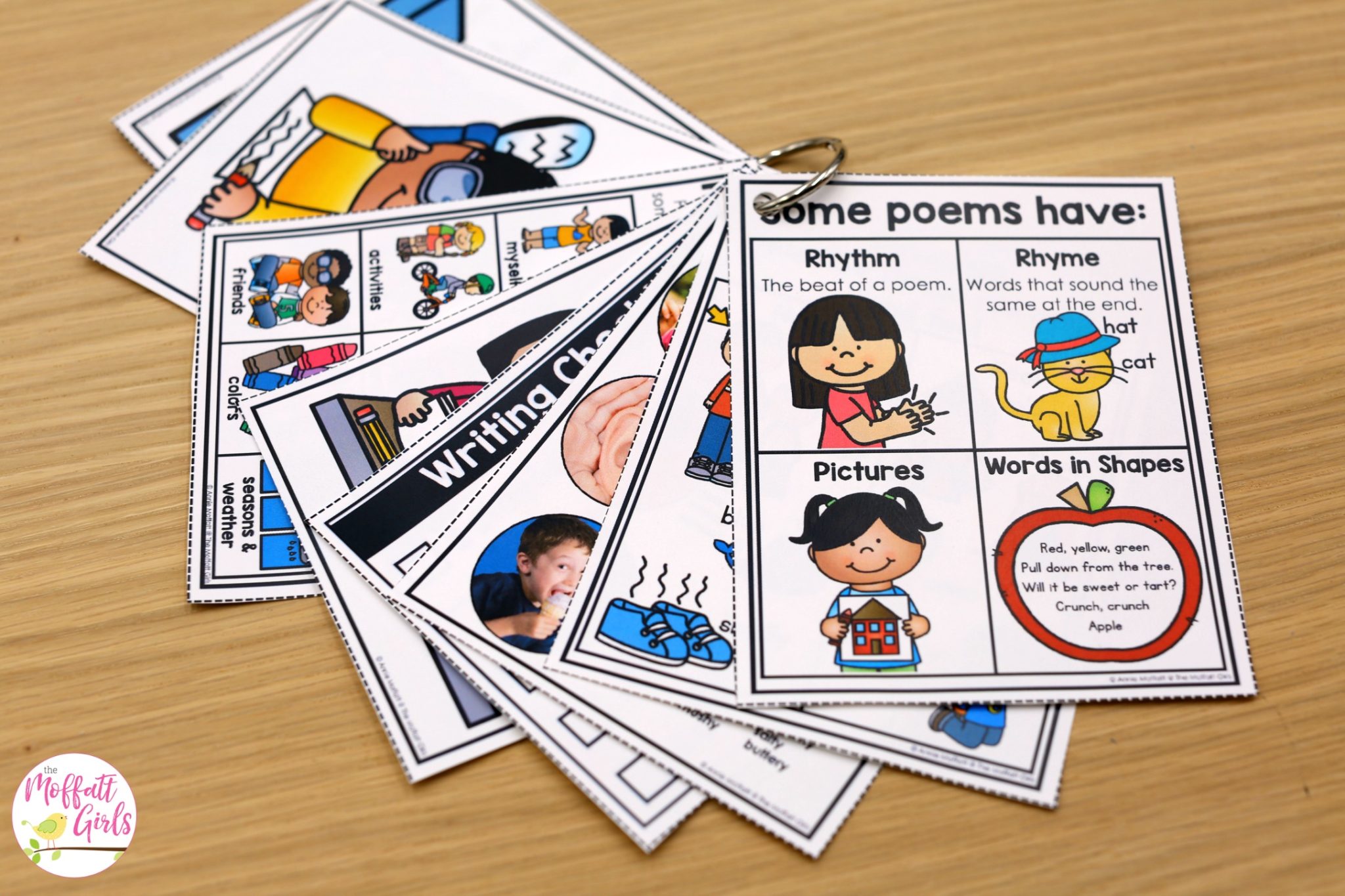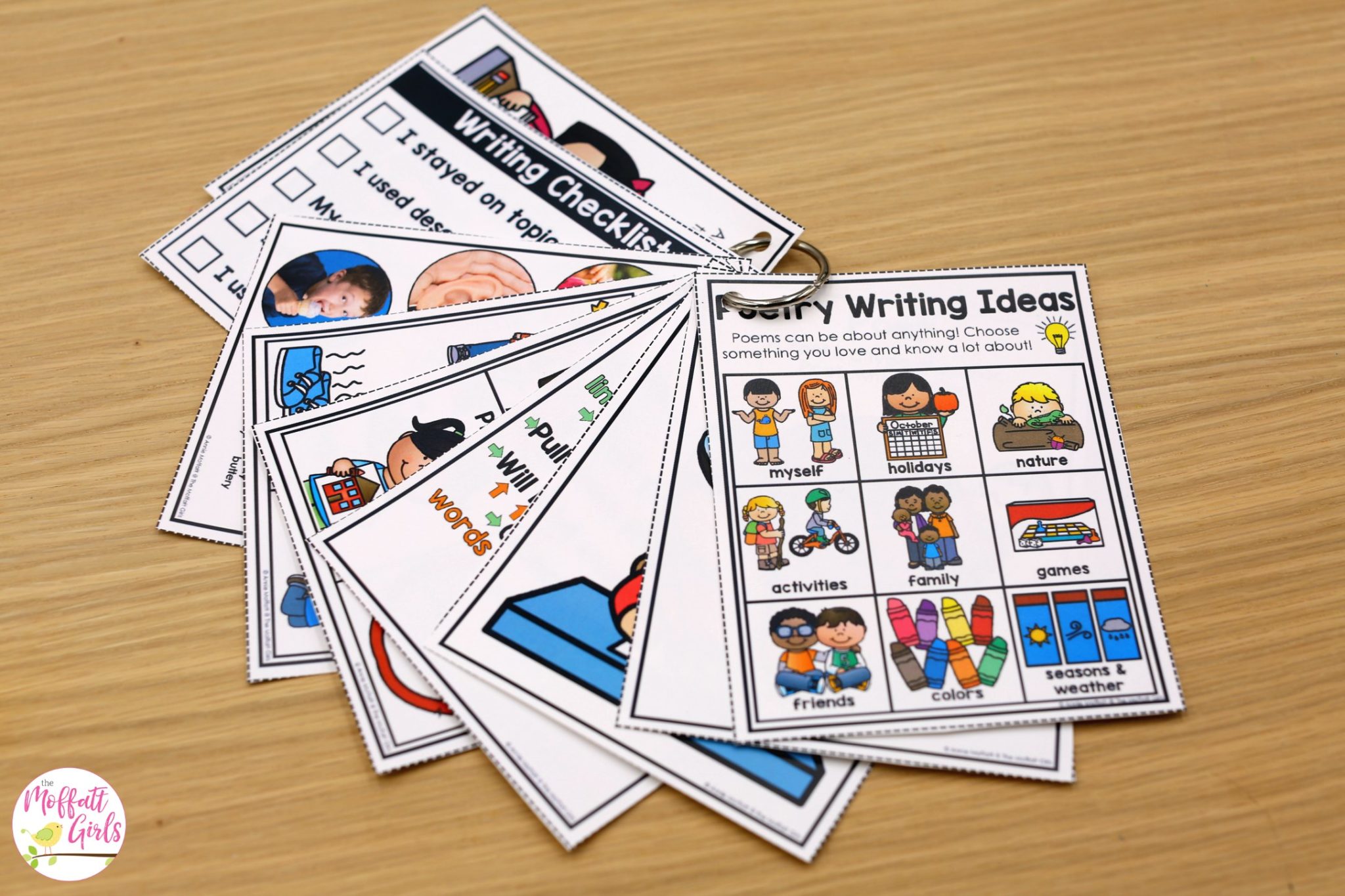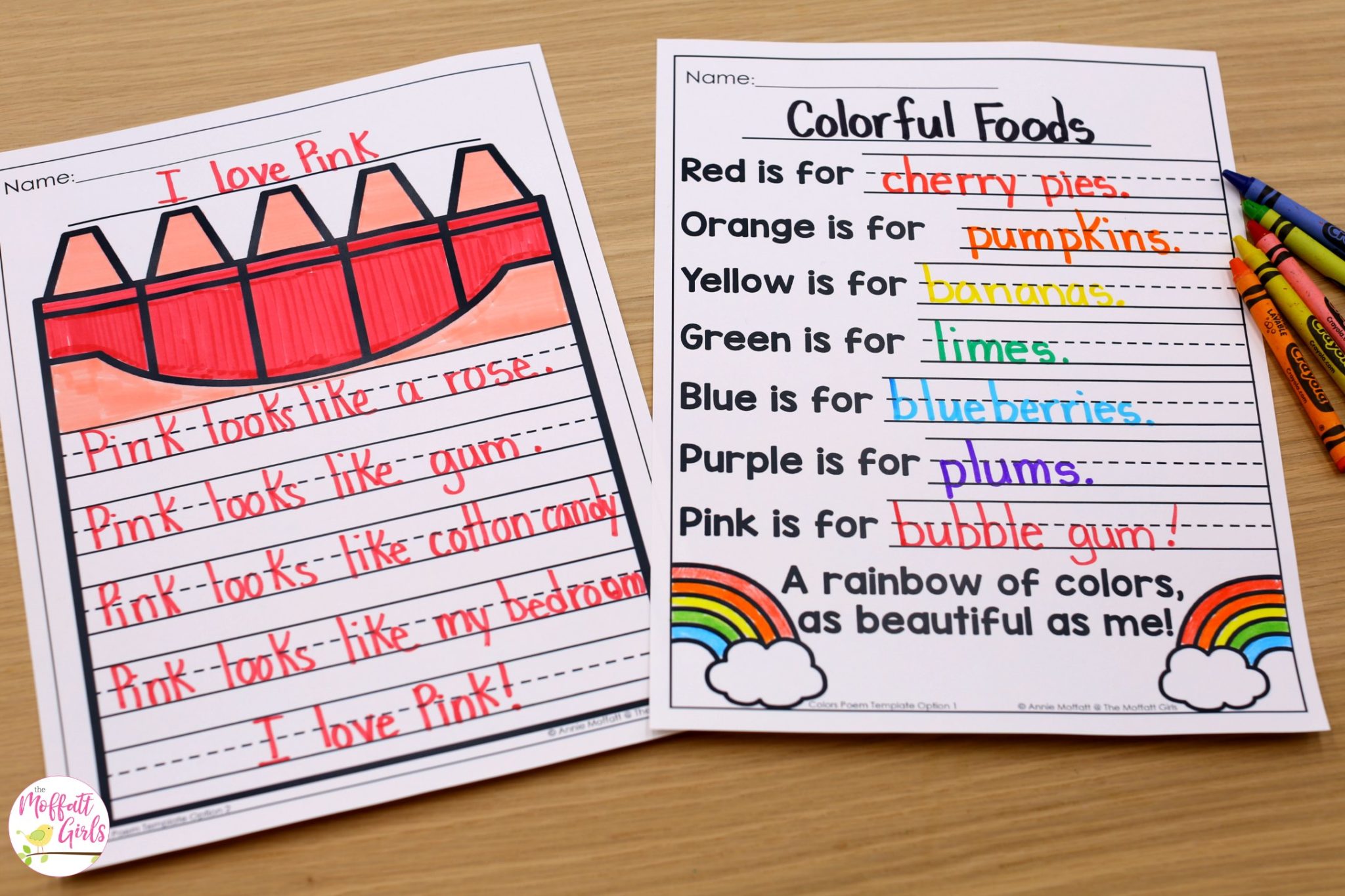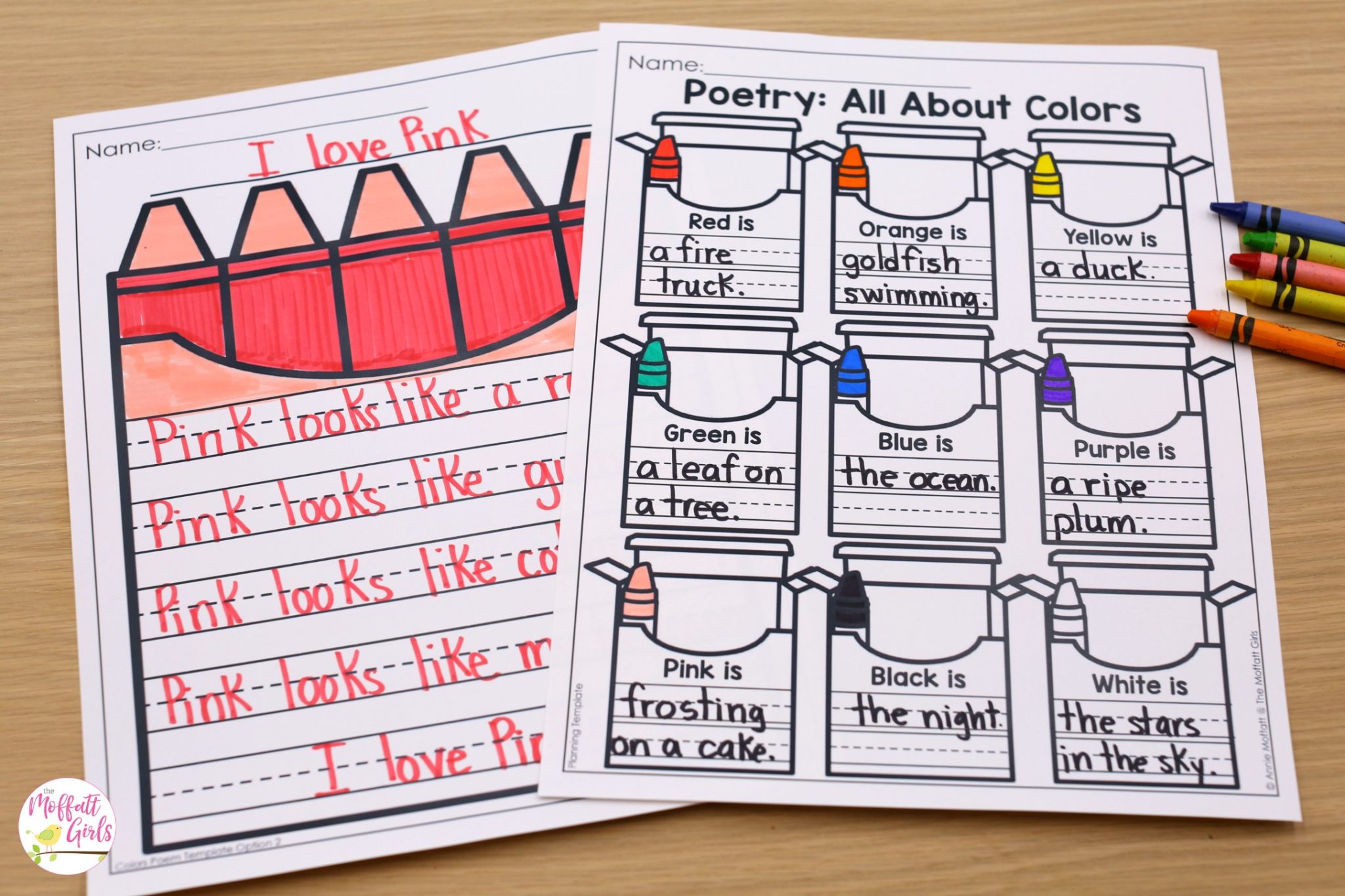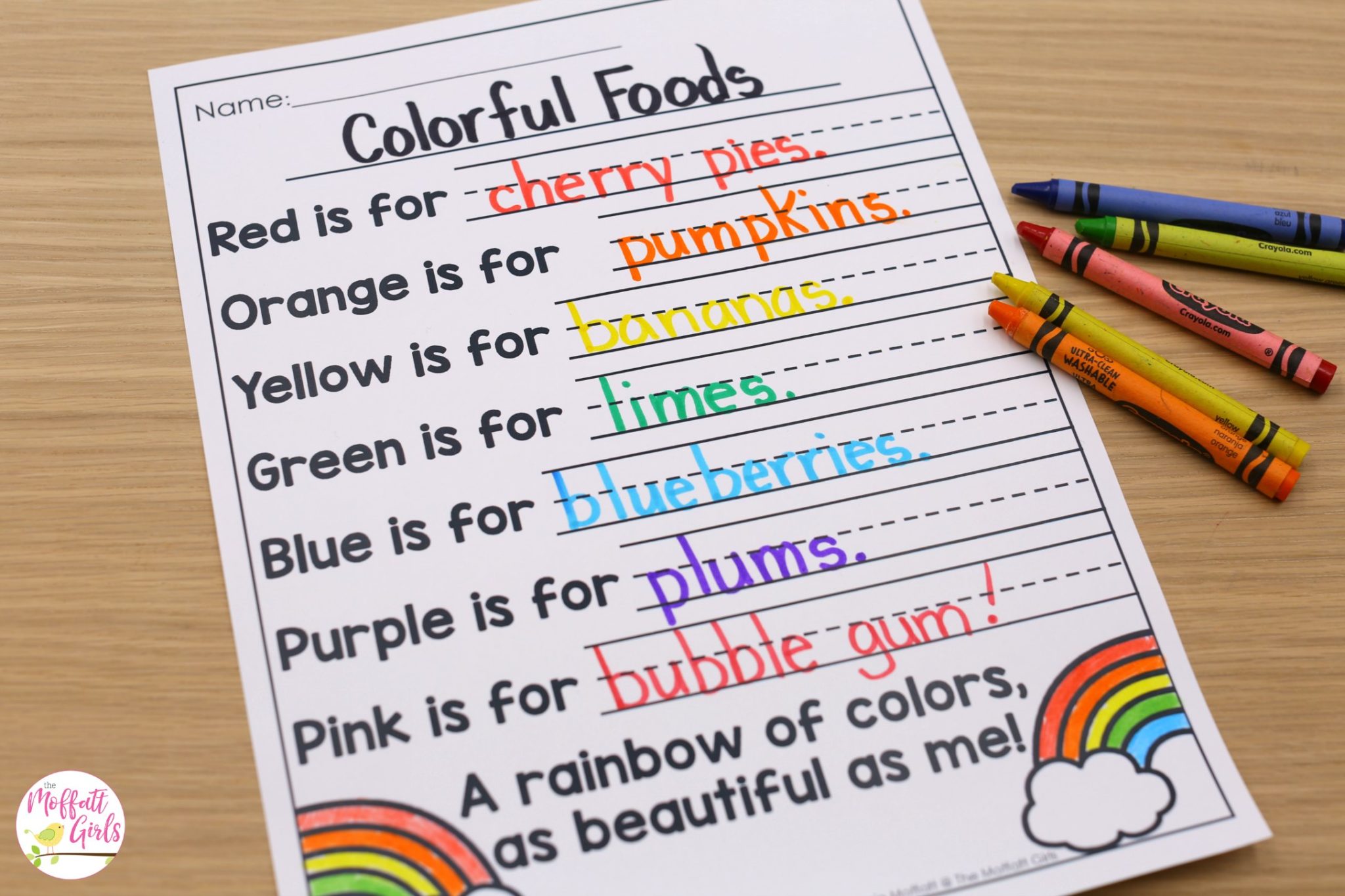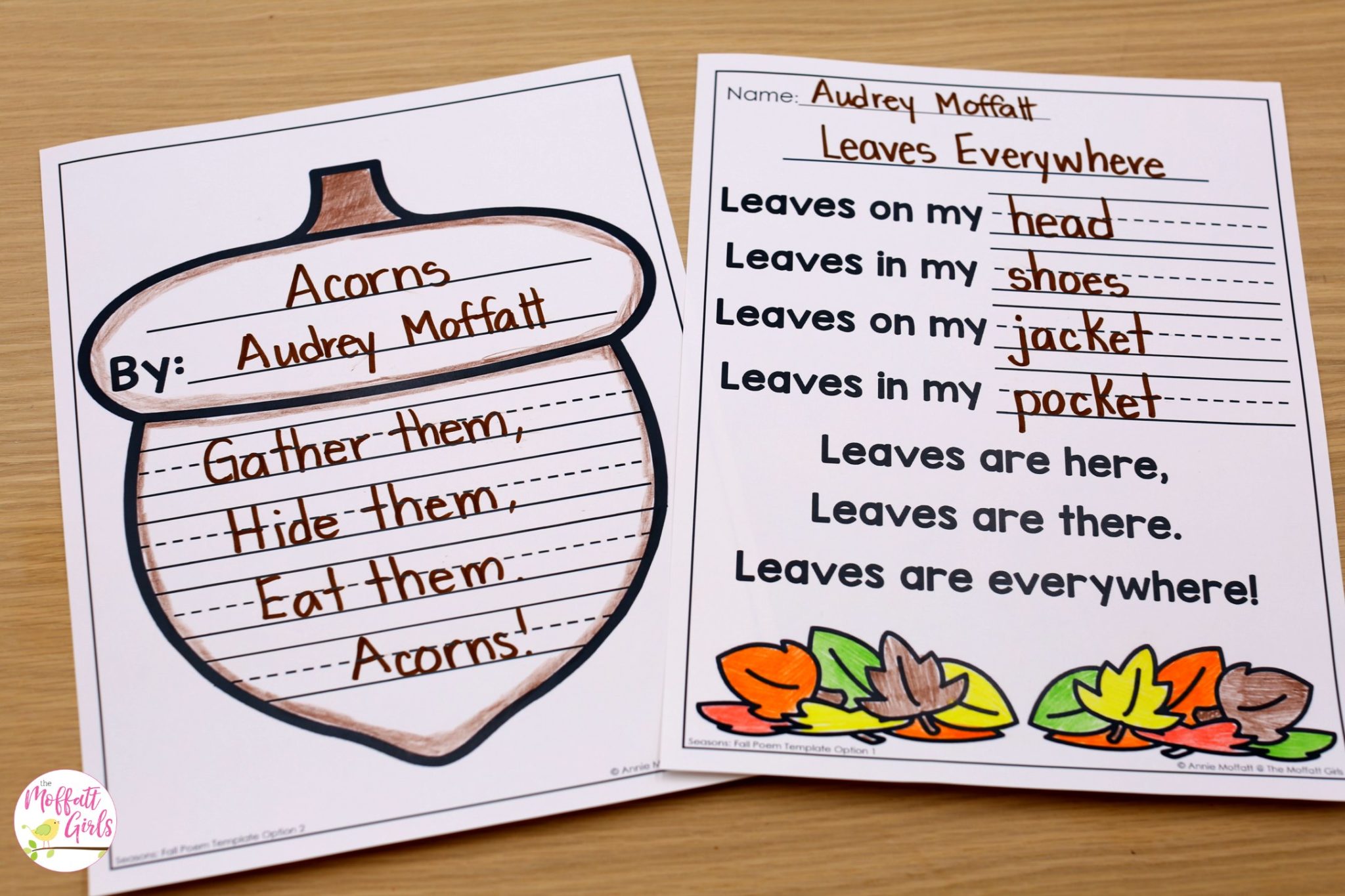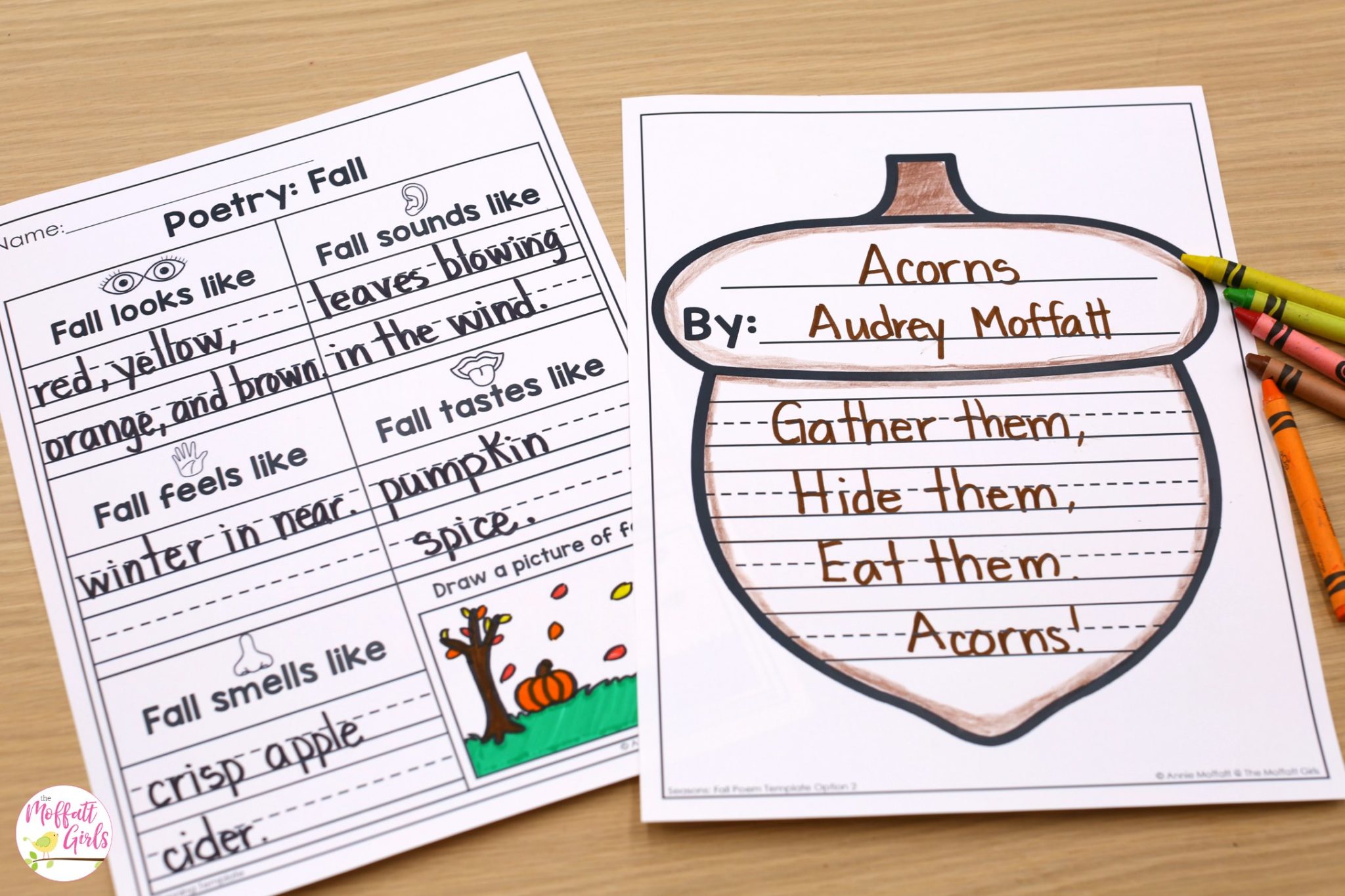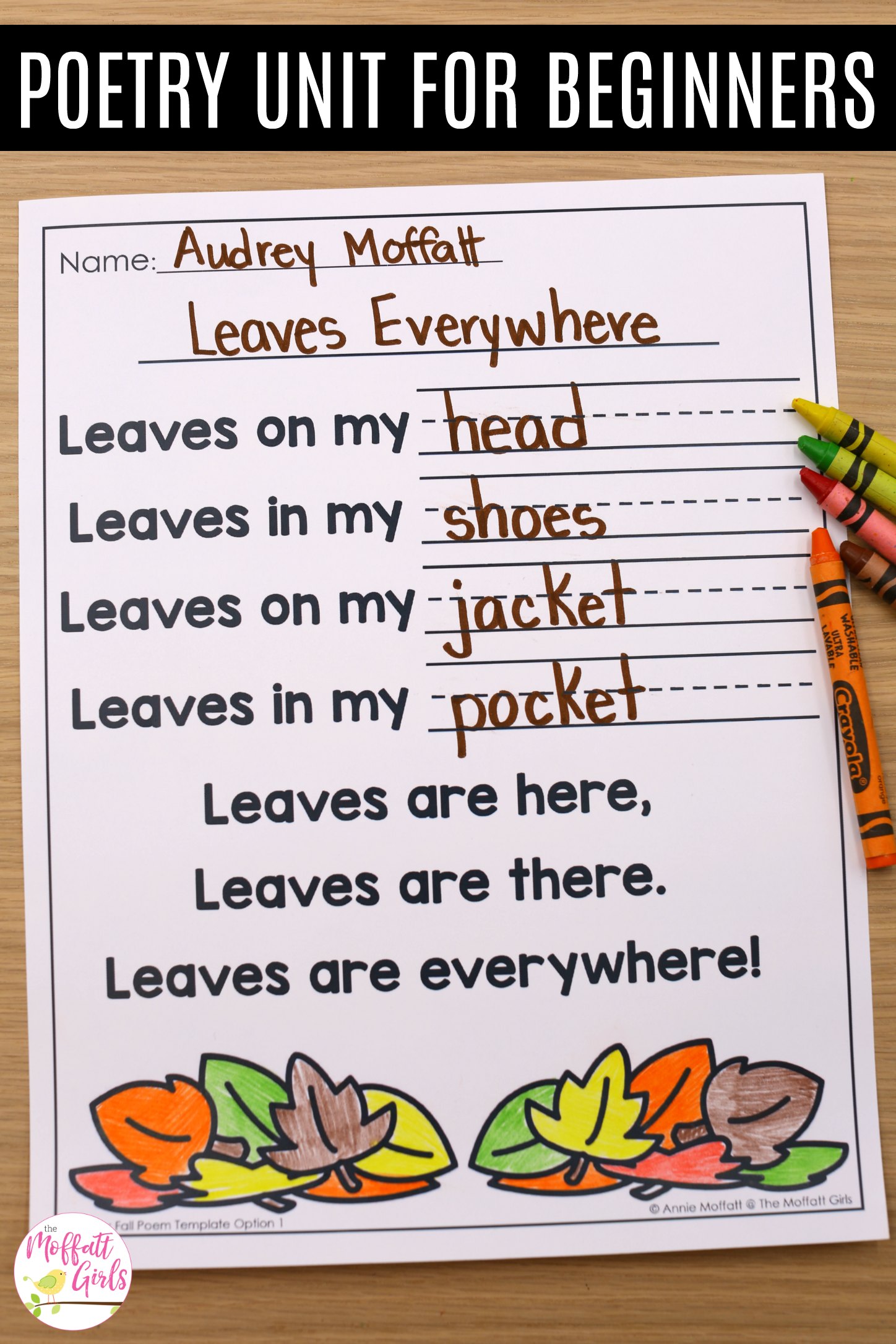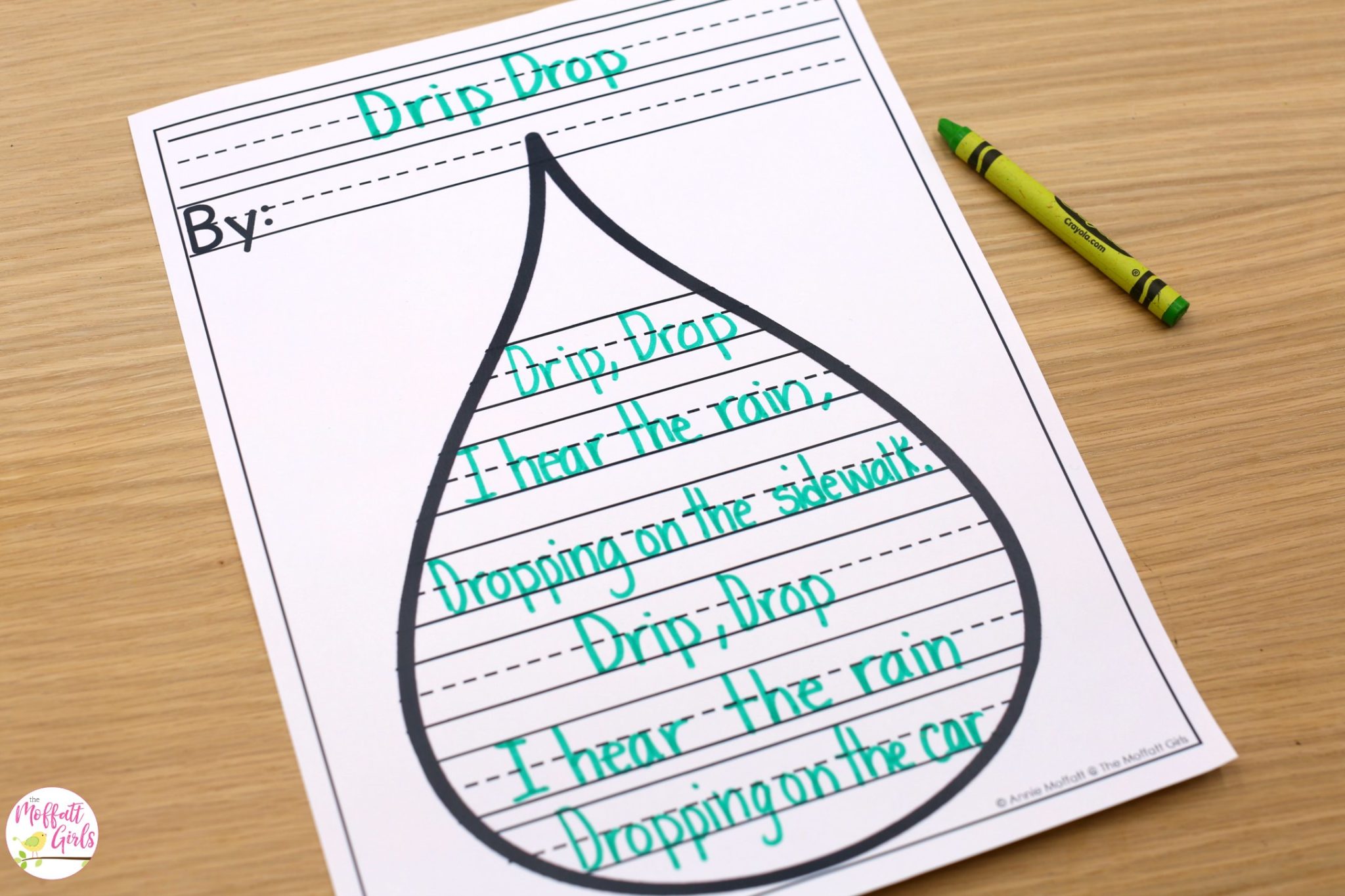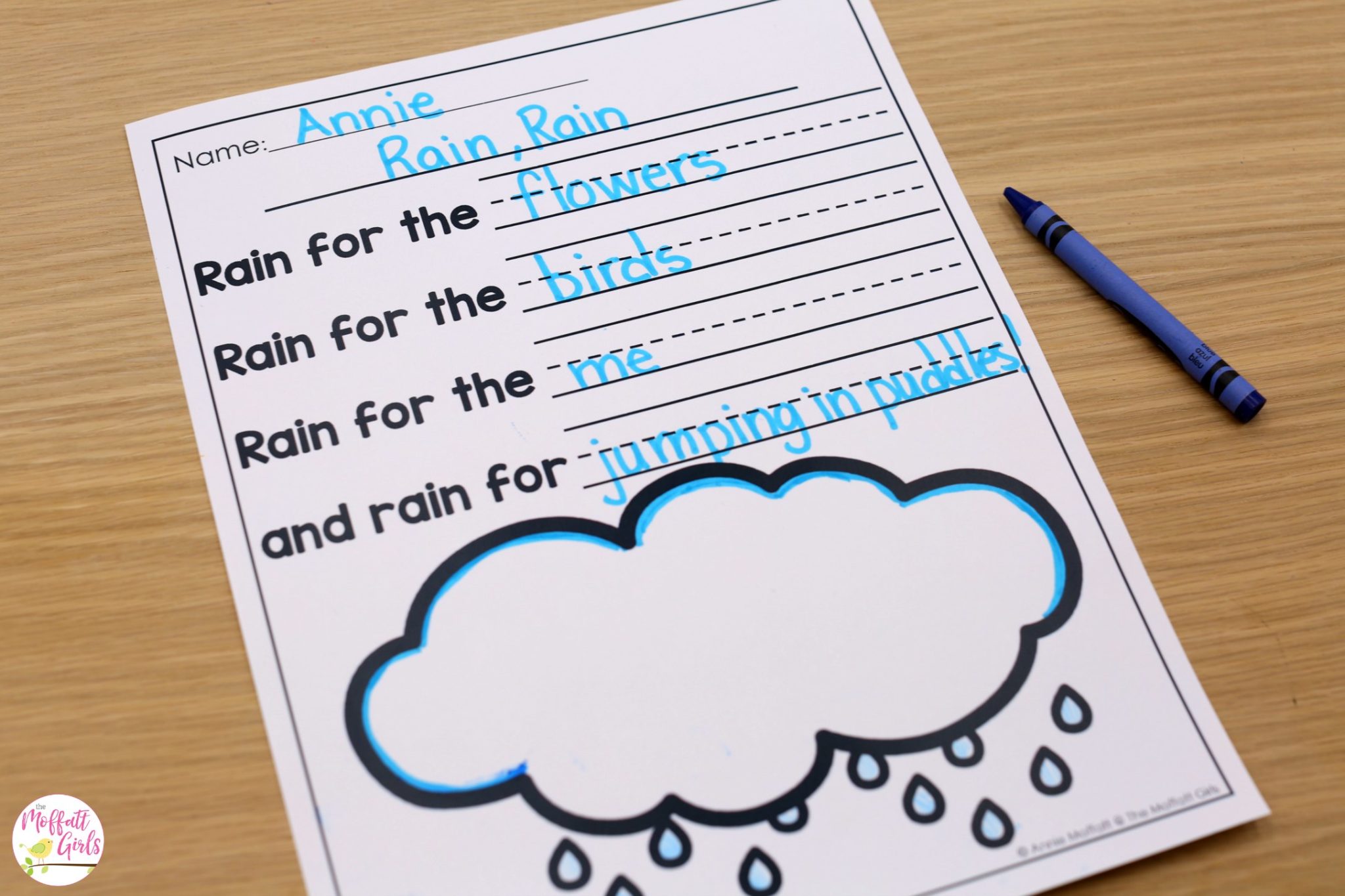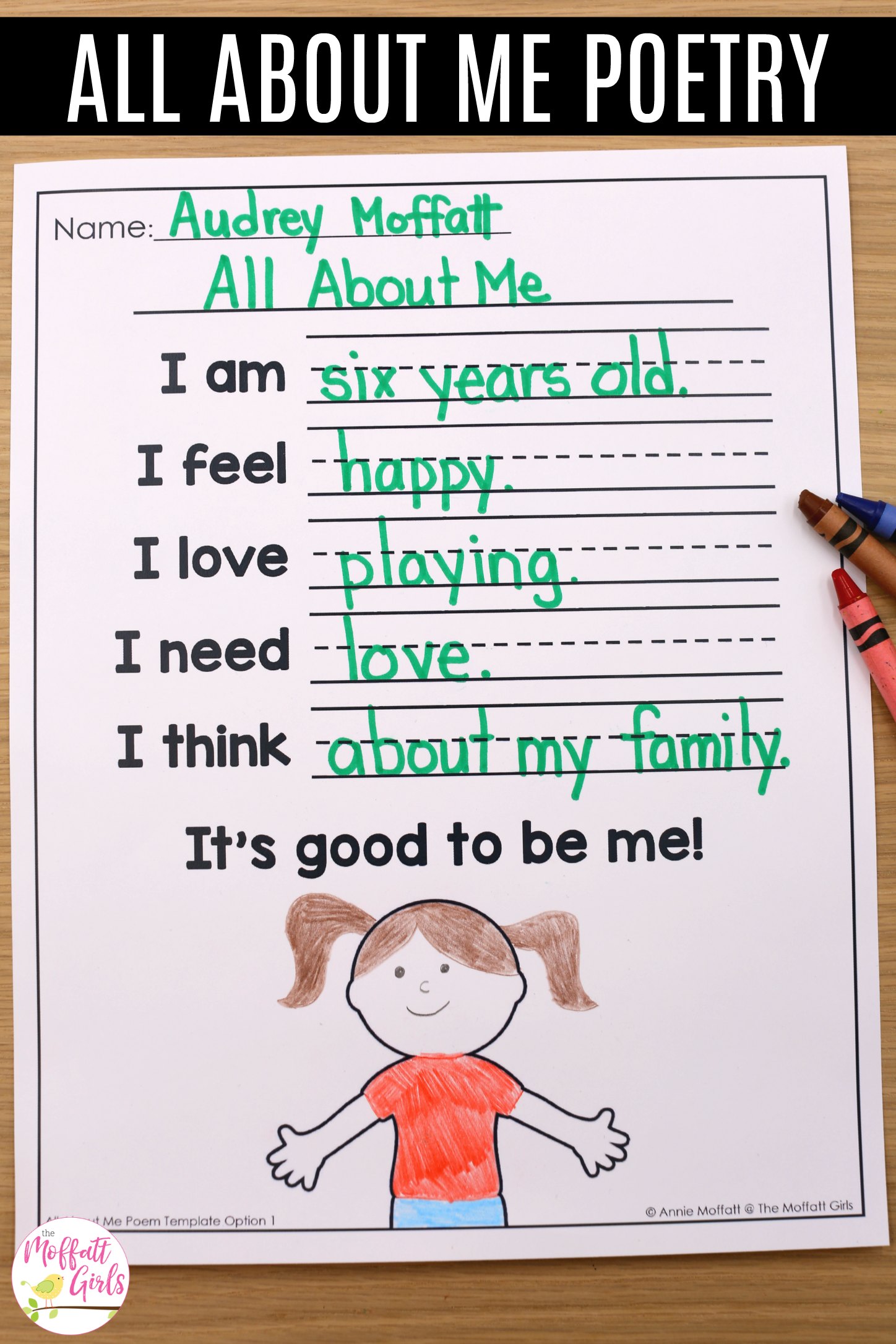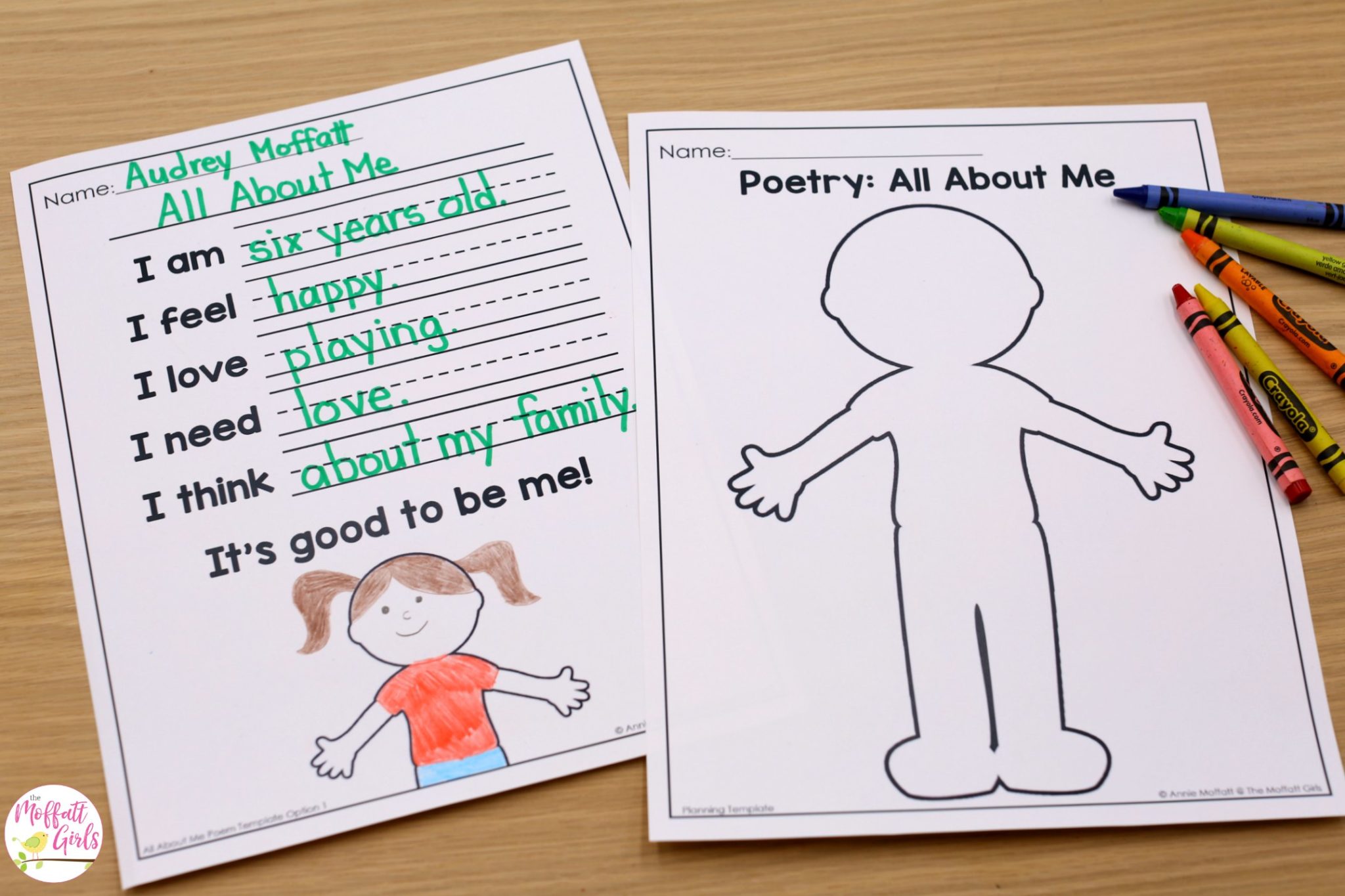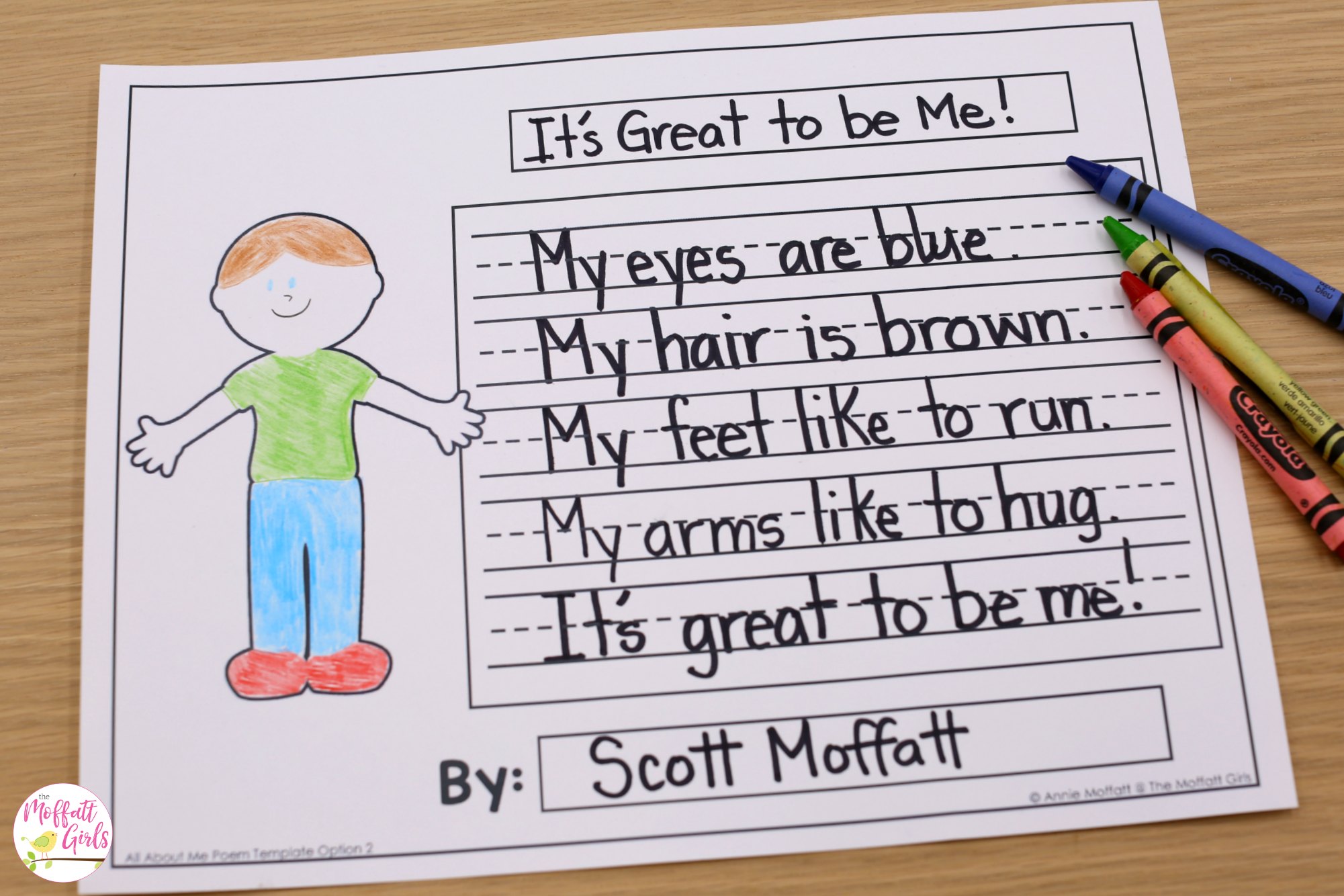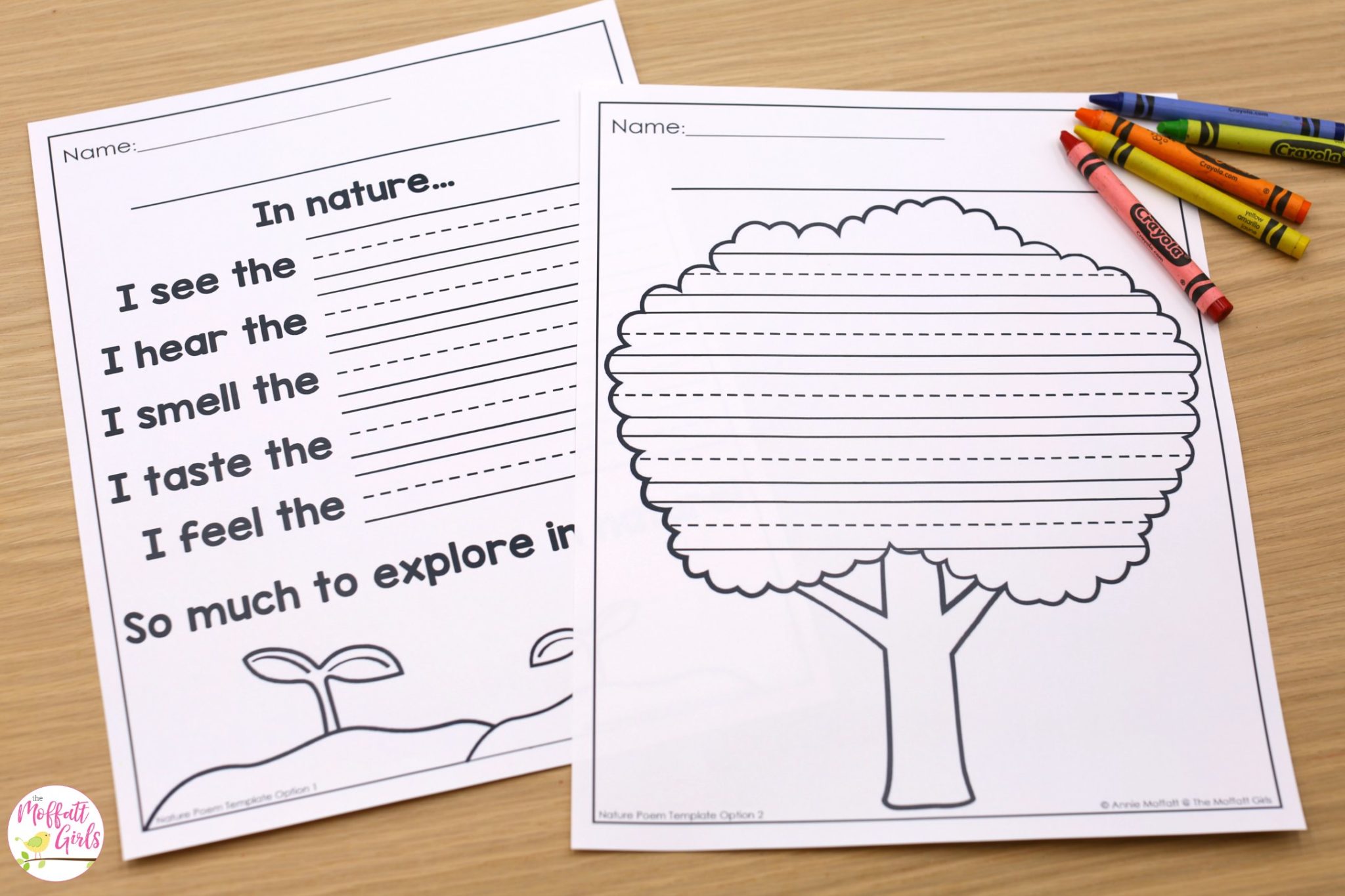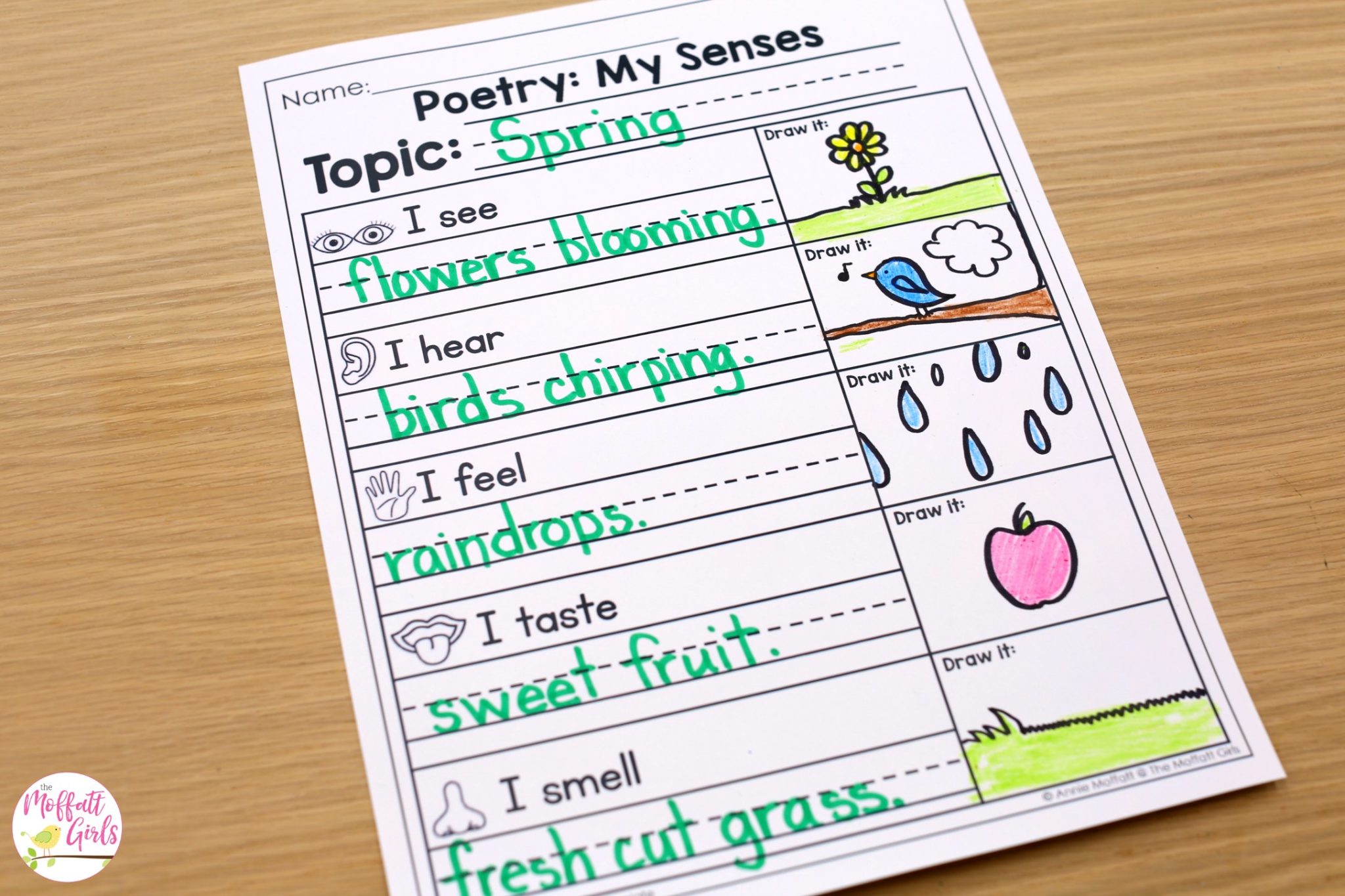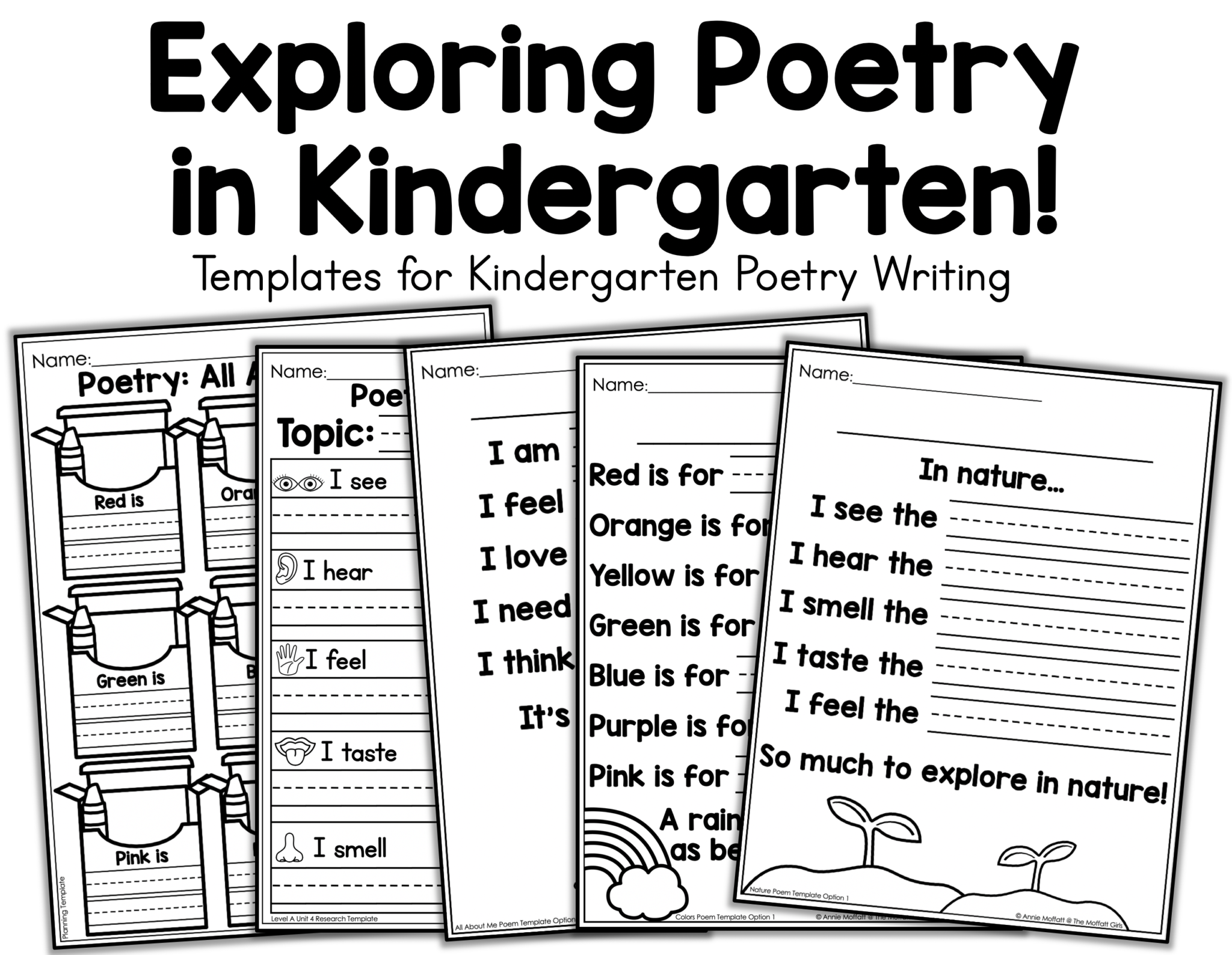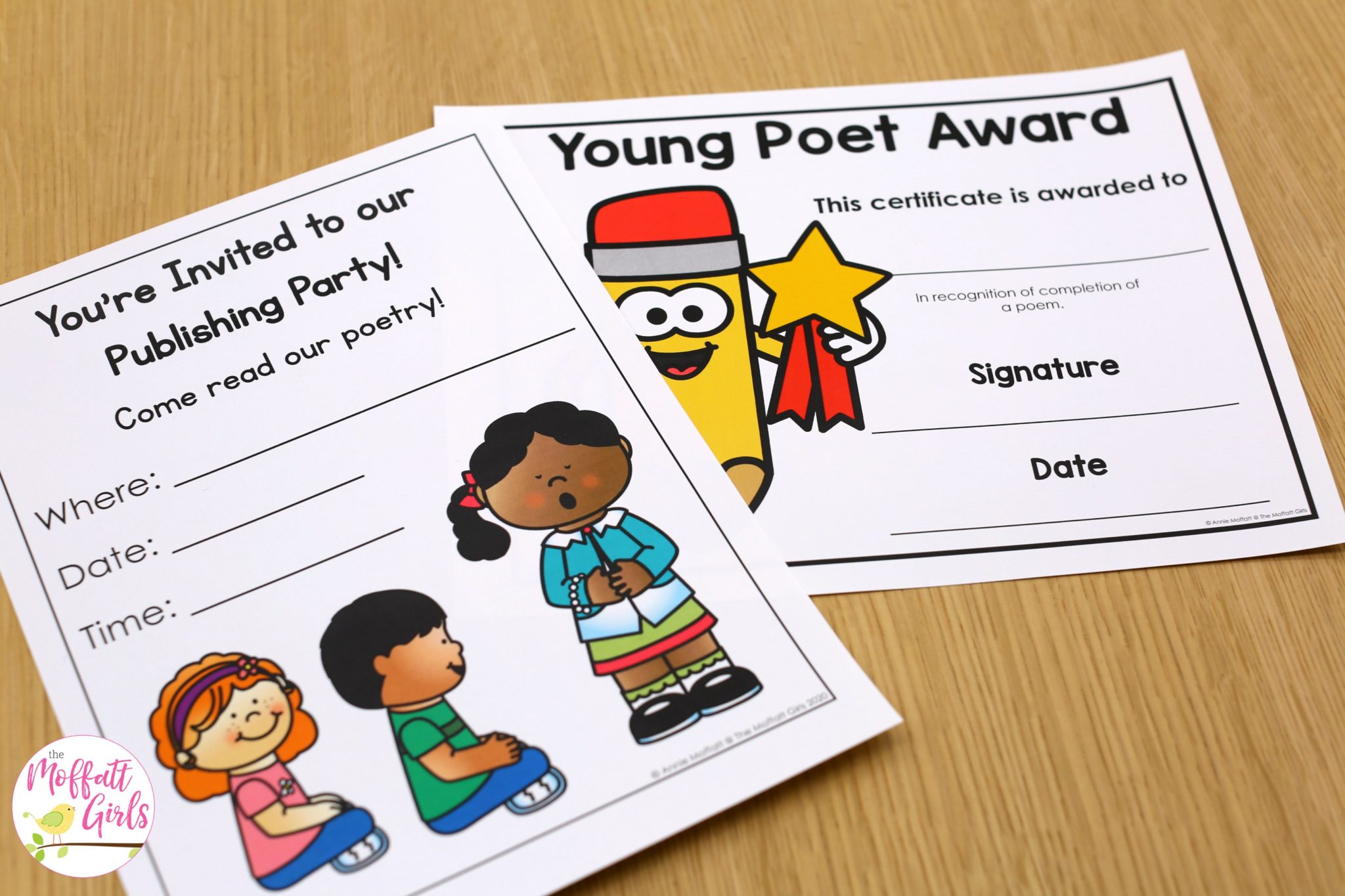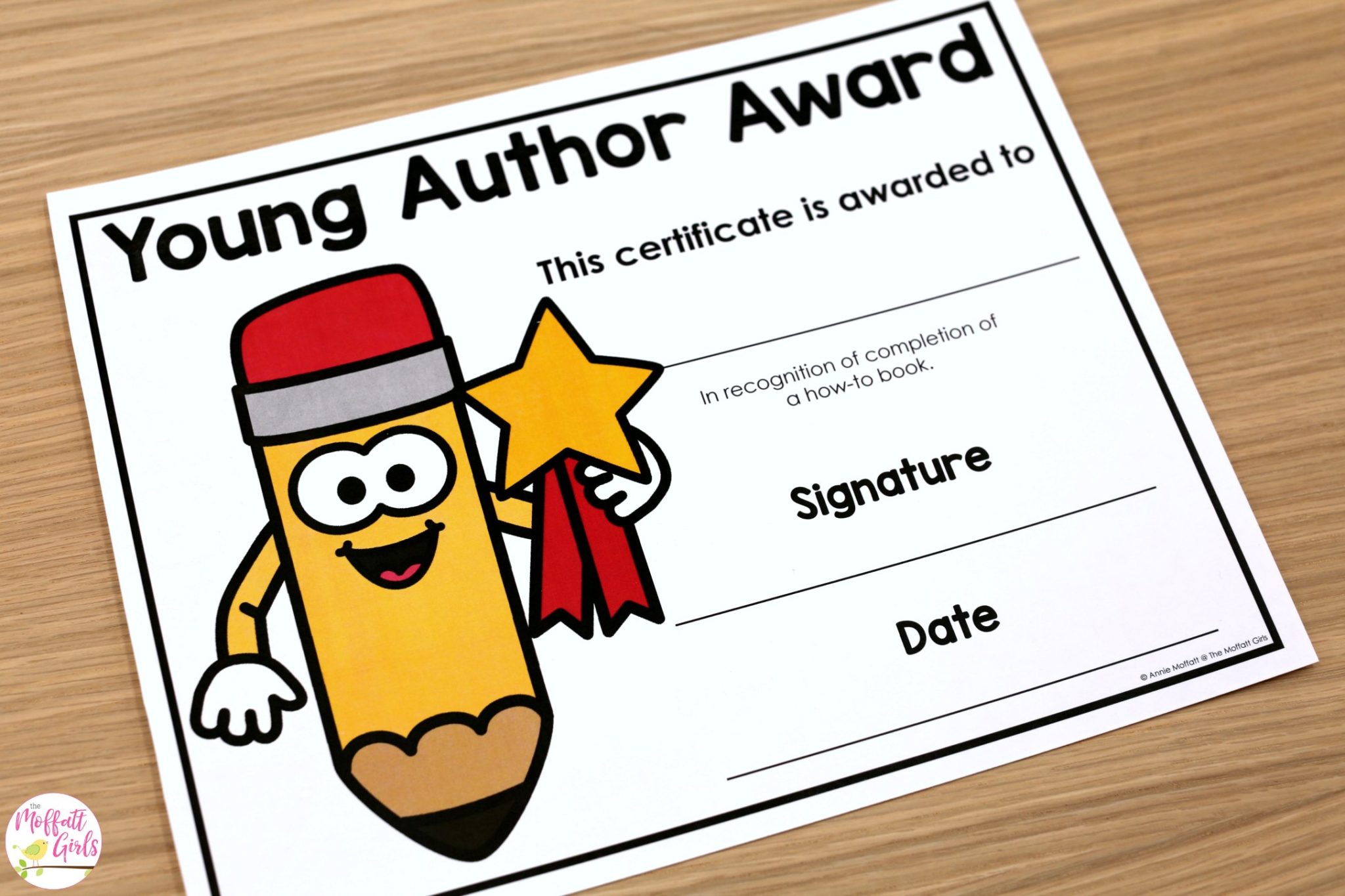I wrote a special Kindergarten Poetry Writing poem just for you. Here it goes:
Roses are red,
Violets are blue,
I think Kindergarten Poetry Writing is hard,
How about you?
No, it certainly doesn’t HAVE to be overwhelming or hard! In this unit, we will cover Kindergarten Poetry Writing in a simple and EASY way! Students will feel successful and teachers will LOVE teaching this unit!
Undoubtedly, teaching writing in kindergarten can be one of the most challenging aspects of teaching. In fact, this is the biggest struggle for many teachers in my private Facebook group. While we are talking about this struggle, let’s be honest: not all adults love to write. In like manner, children can struggle too! This is exactly why I have created the Kindergarten Writing Bundle! This easy to use curriculum has EVERYTHING you need to make writing successful in your classroom or homeschool! Simply put, my desire is for kids to learn to LOVE writing because they feel successful at it!
Fortunately, I think this curriculum hits the spot! I am SO excited to share this Kindergarten Writing Curriculum with you!
Kindergarten Writing Curriculum Scope:
There are a total of 7 units included in this comprehensive writing curriculum:
- Unit 1: Personal Narrative: Sharing My Story
- Unit 2: Non-Realistic Fiction: Using our Imagination
- Unit 3: Writing to Teach and Inform: How-to-Books
- Unit 4: Poetry: Exploring Poetry
- Unit 5: Realistic-Fiction: Writing Interesting Stories
- Unit 6: Opinion and Persuasive Writing: Changing the World
- Unit 7: Non-Fiction Chapter Books: Creating a Chapter Book
Let’s take a look at Unit 4 in the Kindergarten Writing Curriculum!
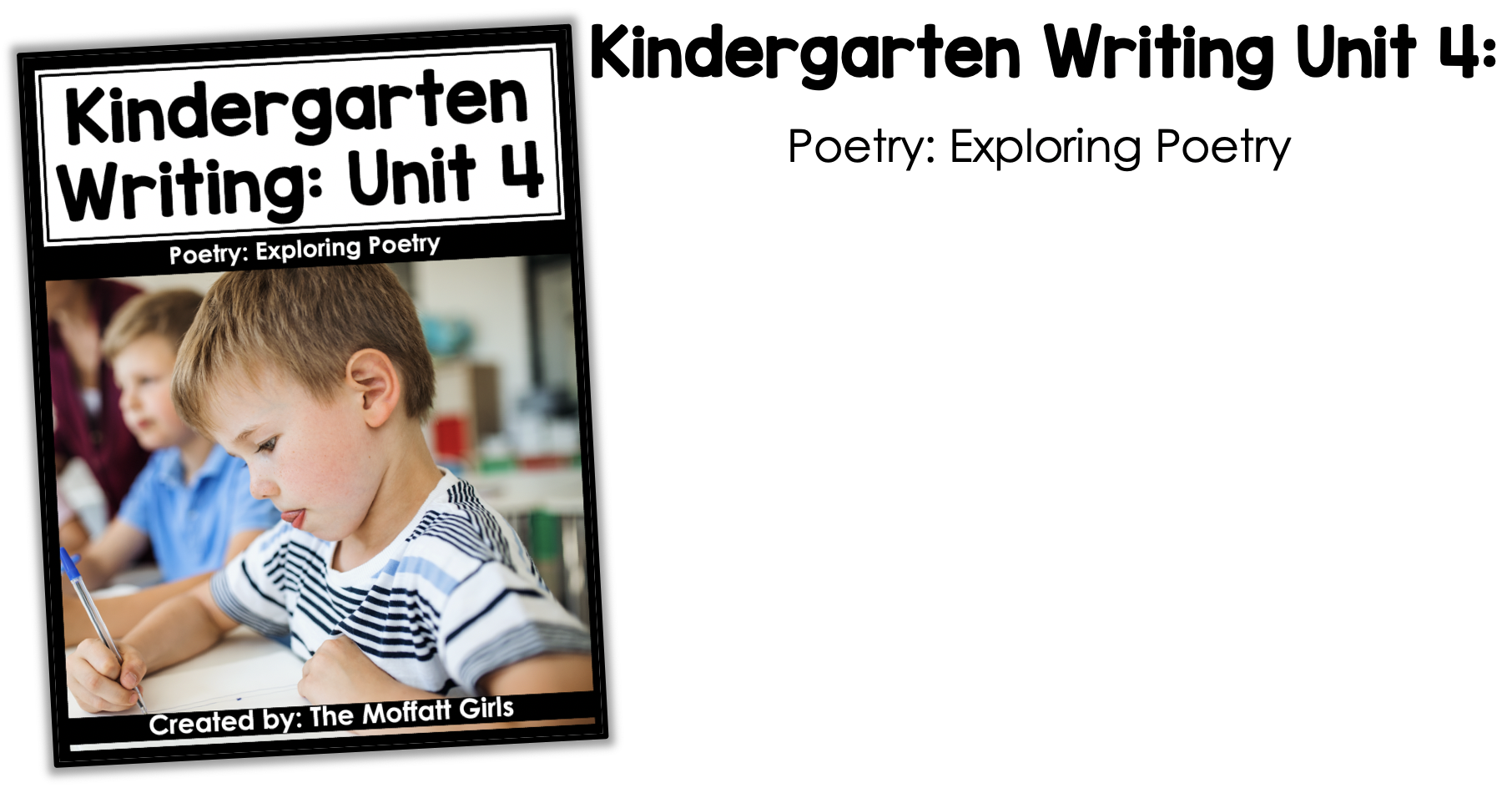
Teaching Kindergarten poetry writing can be one of the most exhilarating and rewarding units to teach! Kids LOVE it for many reasons! In many ways, poetry can be exciting for kids, less restrictive and fun! Students have the opportunity to let their imaginations soar! Nonetheless, it is still important to teach writing using a systematic approach so that students thrive with some set of structured organization with the writing process.
This Kindergarten Writing Curriculum uses a Writers Workshop type model. This means that there will be a mini-lesson, status updates (pre-writing, drafting, revising, editing, evaluating, or publishing), writing, and sharing! Don’t worry… I have you covered on how to effectively implement this curriculum in your classroom!
So when do you start teaching writing in Kindergarten? Good question! Right away! You can get this curriculum up and running during the first or second week of school! Luckily, you don’t need to wait until students know a certain number or sight words or letters. During Unit 1 and 2, we are not expecting them to write sentences….yet! Instead, in Unit 2 we will continue to help students understand that their drawings/illustrations tell a story. Consider all of the wordless picture books you have “read.” You can certainly understand the storyline in those books. Allowing students to draw pictures and orally tell their story will show them that they too are authors!
*Side note: If you are looking for fun ways to teach the alphabet, click here. For fun phonics activities, click here.
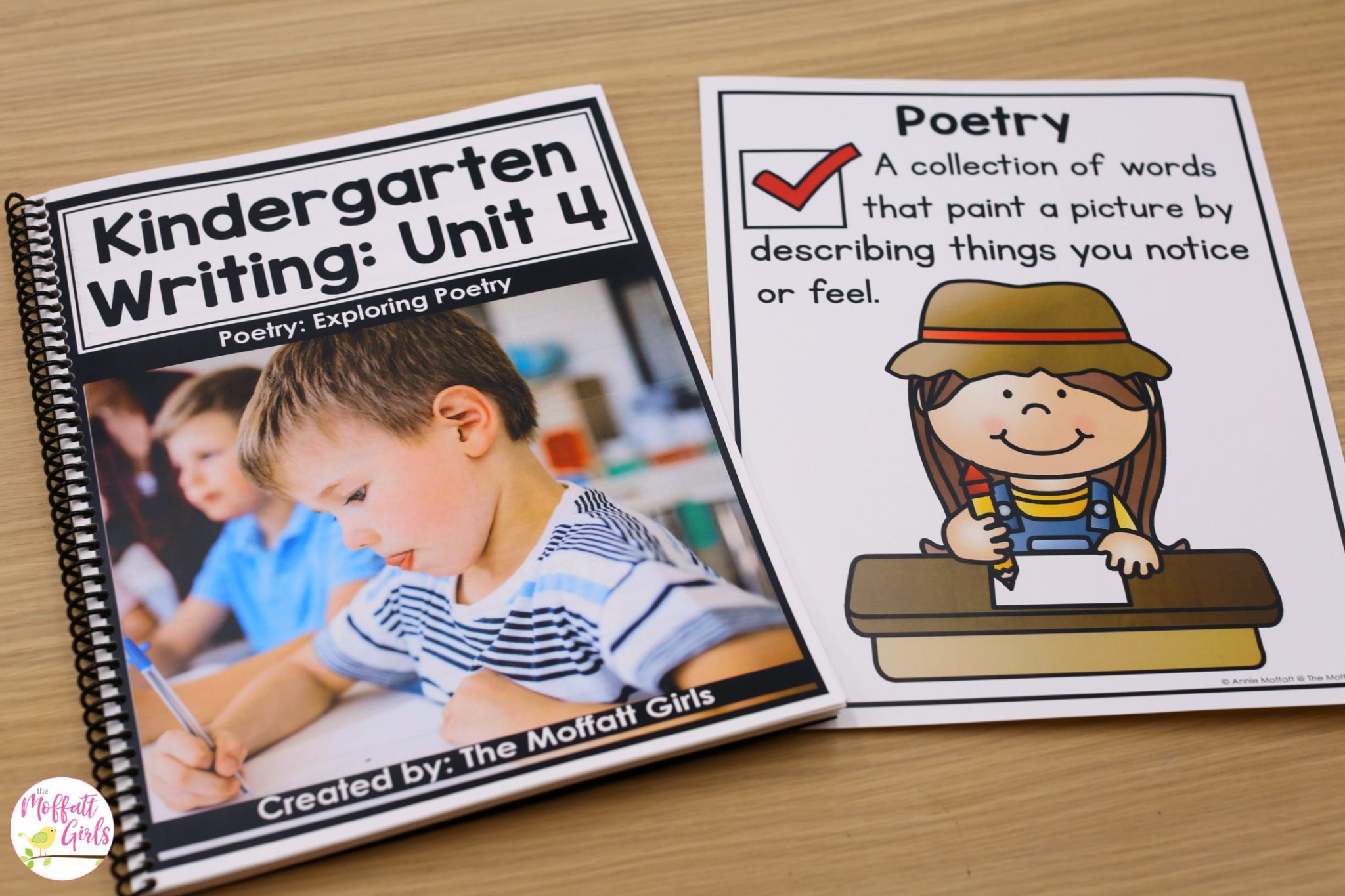
What is Included In Unit 4: Kindergarten Writing Poetry?
- 22 Detailed Lesson Plans
- Suggested Schedule for (60, 45, and 30 minute blocks)
- Tips for Getting Started
- Curriculum Scope and Unit Scopes
- Developmental Writing Stages Chart
- Mentor Text Guides
- Conferencing Guides, Planners, and Trackers
- Assessments Guides
- Rubrics
- Writing Templates
- Publishing Party Guide and Templates
- Poetry definition poster
- Poetry Jobs
- All Poems Have…
- Poems Describe and Notice Feeling Poster
- My 5 Senses Poster
- Poetry Writing Ideas
- Personal Word Wall
- Writer’s Checklist
- Template planning
- Using our Senses practice page
- The Writing Process Poster
- Young Author Award Certificate
Let’s start with the Lesson Plans!
These easy-to-follow lesson plans set you up for success. They are broken up into 6 simple parts:
- Focus- The skill, strategy, or idea students will be focusing on this lesson.
2. Warm Up- A quick activity that has students review and practice previous skills.
3. Mini Lesson- Teach, model, and discuss the new skill in today’s lesson.
4. Practice-The hands-on portion of the lesson where students apply what they have learned in the mini lesson to their own writing. During this time you will conference individually with students.
5. Mid-Practice Teaching Point- A quick reminder and chance to highlight the great work students are doing.
6. Share- Lesson wrap up where students analyze, reflect on, and share their work.
I have also laid out what a lesson might look like with a 60 minute, 45 minute, and 30 minute time block. We all have different schedules, and this writing curriculum is designed to meet your needs! Do what works best for YOU!
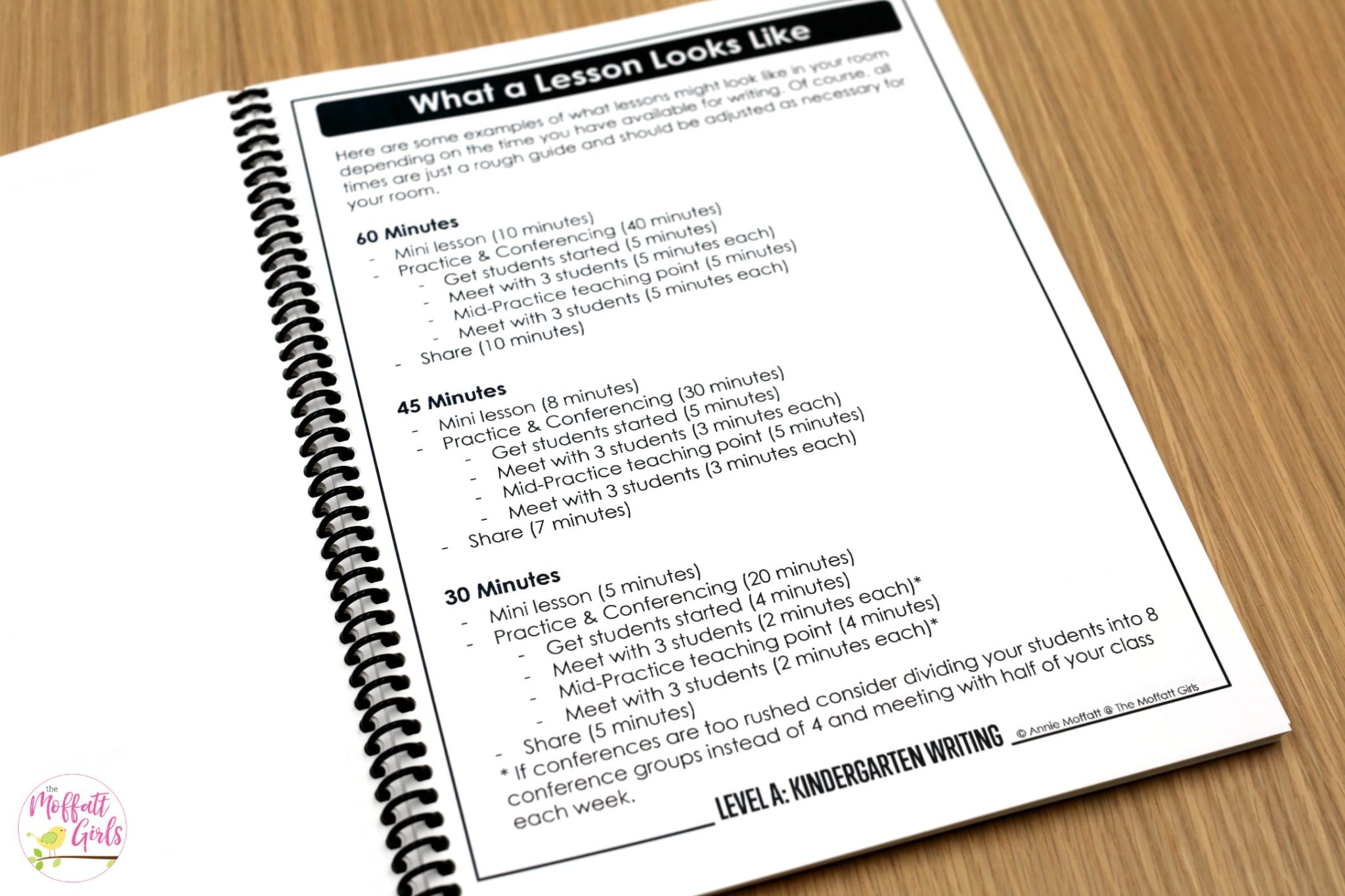
Also included are some tips for getting started! With this cohesive curriculum, I have set you up for success! In short, all the work has been done for you. Just print out your materials and open up your lesson plans! Of course you will want to monitor students progress, and change your plans appropriately.
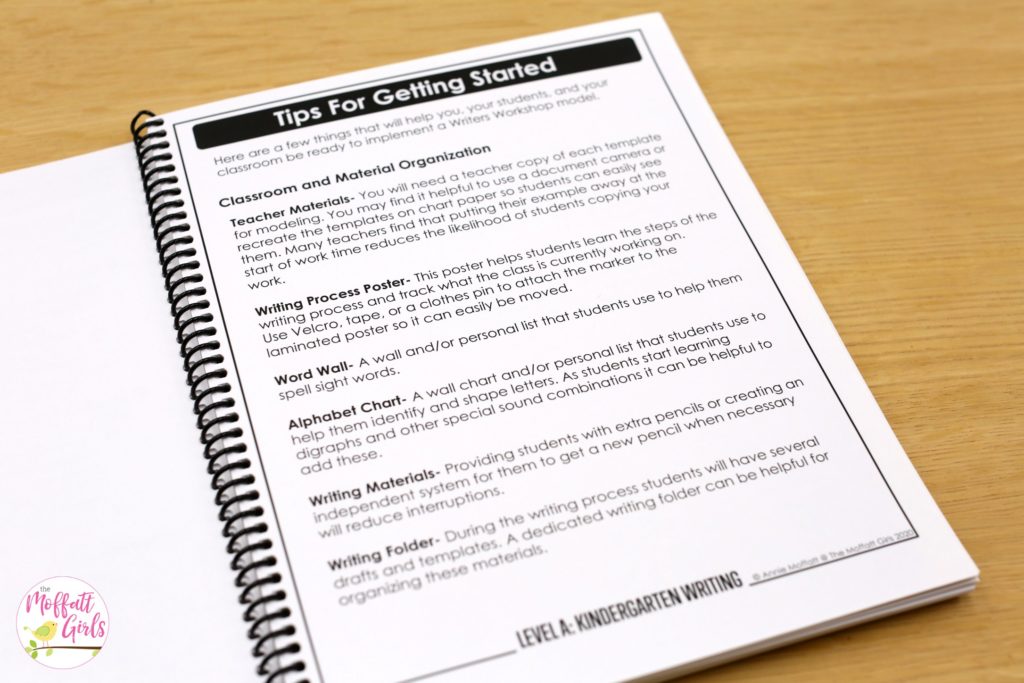
Here are a few things that will help you, your students, and your classroom be ready to implement a Writers Workshop model.
Things to keep on-hand:
Teacher Materials- You will need a teacher copy of each template for modeling. You may find it helpful to use a document camera or recreate the templates on chart paper so students can easily see them. Many teachers find that putting their example away at the start of work time reduces the likelihood of students copying your work.
Writing Process Poster- This poster helps students learn the steps of the writing process and track what the class is currently working on.
Use Velcro, tape, or a clothes pin to attach the marker to the laminated poster so it can easily be moved.
Word Wall- A wall and/or personal list that students use to help them spell sight words.
Alphabet Chart- A wall chart and/or personal list that students use to help them identify and shape letters. As students start learning digraphs and other special sound combinations it can be helpful to add these.
Writing Materials- Providing students with extra pencils or creating an independent system for them to get a new pencil when necessary will reduce interruptions.
Writing Folder- During the writing process students will have several drafts and templates. A dedicated writing folder can be helpful for organizing these materials. I’ve included a cover that you can personalize to add to the front of each writing folder.
Kindergarten Poetry Writing Unit 4 Scope:
22 detailed lesson plans that will walk you through how to teach kindergarten poetry writing! By the end of the unit, your students will have written several poems!
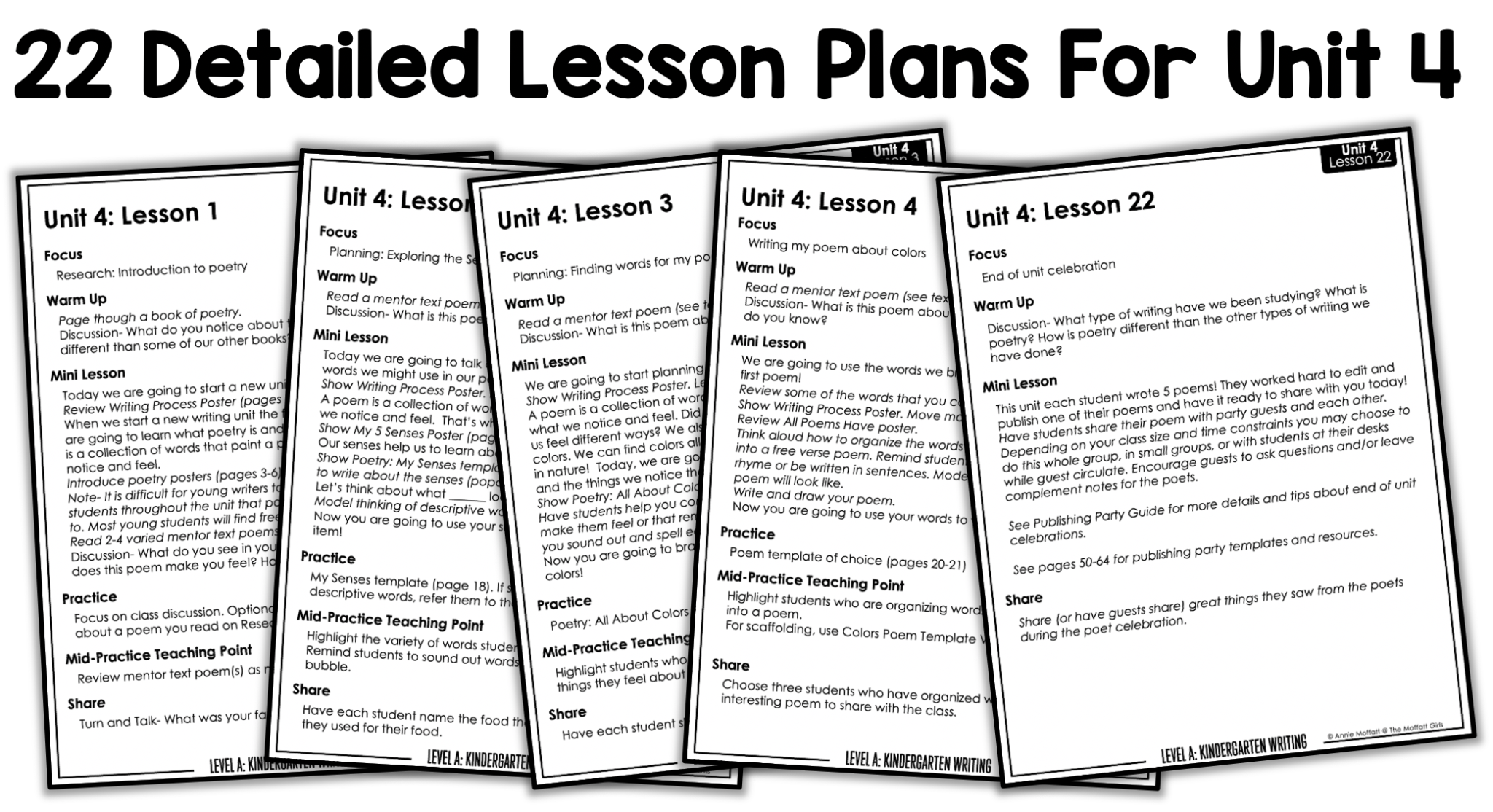

In order to make your writing block effective, be sure to implement procedures and plan out your routines and expectations. Get your materials set up and provide students with a writing folder. Be sure to model, model, model!
Organization:
Each child will get his/her own writing folder. Of course, this folder will be the place where they keep all of their writing templates, charts, and materials.
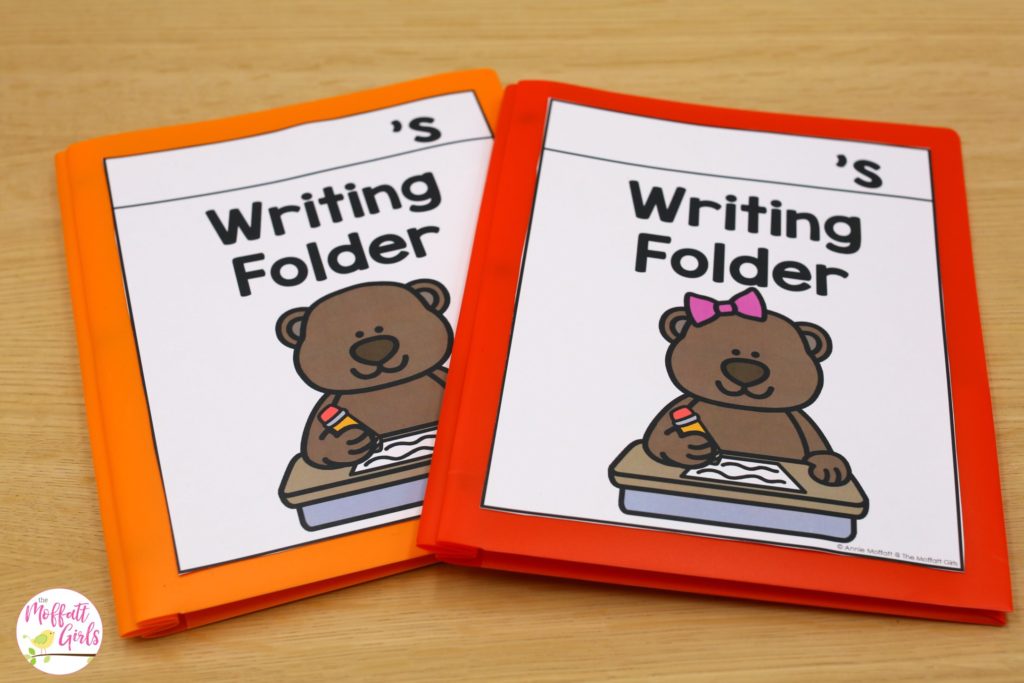
Inside of each folder, you can include the Alphabet Sound Chart, the Letter Chart, Letter Formation Chart and any other resources about the unit.
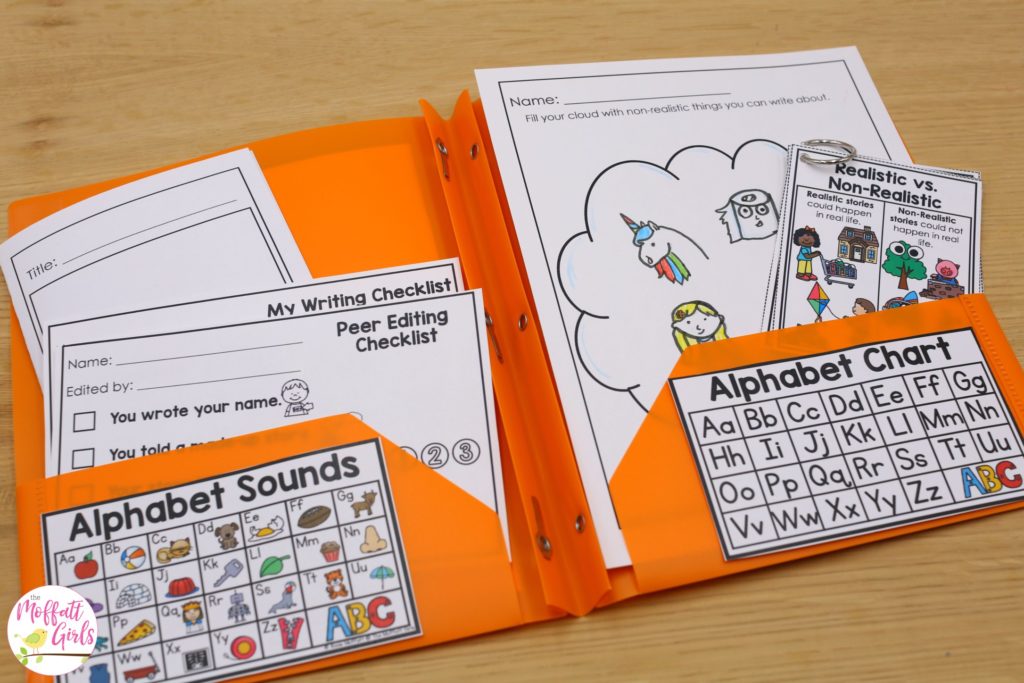
Included in the files are pencil labels…
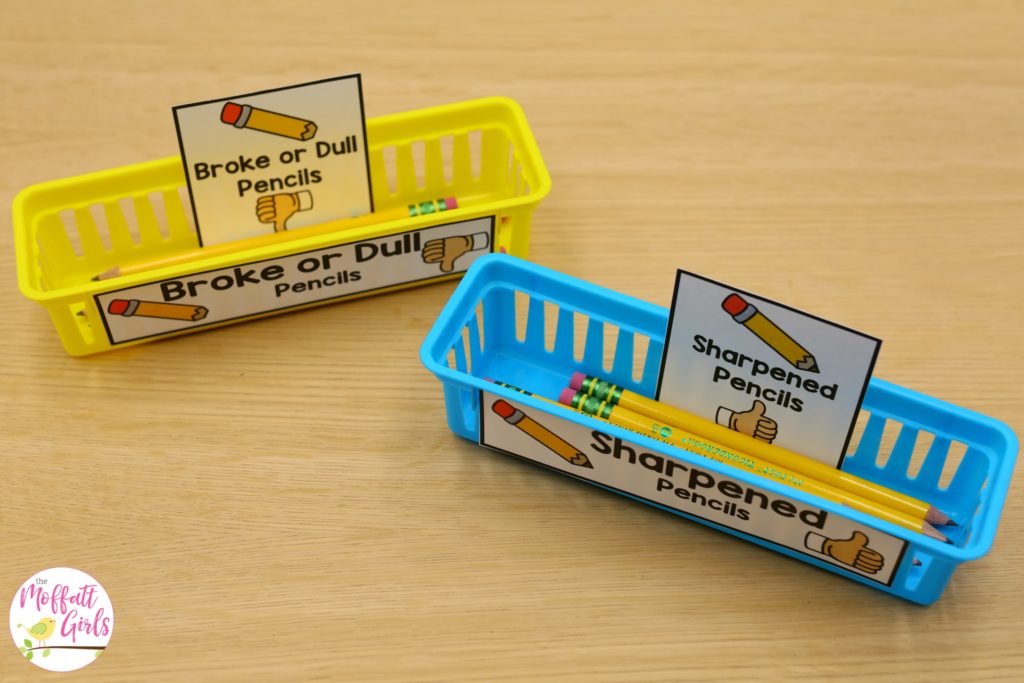
Mentor Texts:
Mentor texts are an important component to each unit in the Writing Curriculum. What are Mentor Texts? Mentor text(s) are 1-2 example texts that illustrate the writing style we are focusing on for the unit.
For the Kindergarten Non-Realistic Fiction, here are some examples of mentor texts you can use:
- “Here’s a Little Poem” complied by Jane Yolen and Andrew Fusek Peters
- “National Geographic Book of Nature Poetry” compiled by J. Patrick Lewis
- “A Stick Is an Excellent Thing” by Marilyn Singer
- The Children’s Poetry Archive https://childrens.poetryarchive.org
- Poems written by other students
There are plenty of other options that you can choose as mentor texts to teach Kindergarten Poetry Writing, but these are just a few of my favorites.
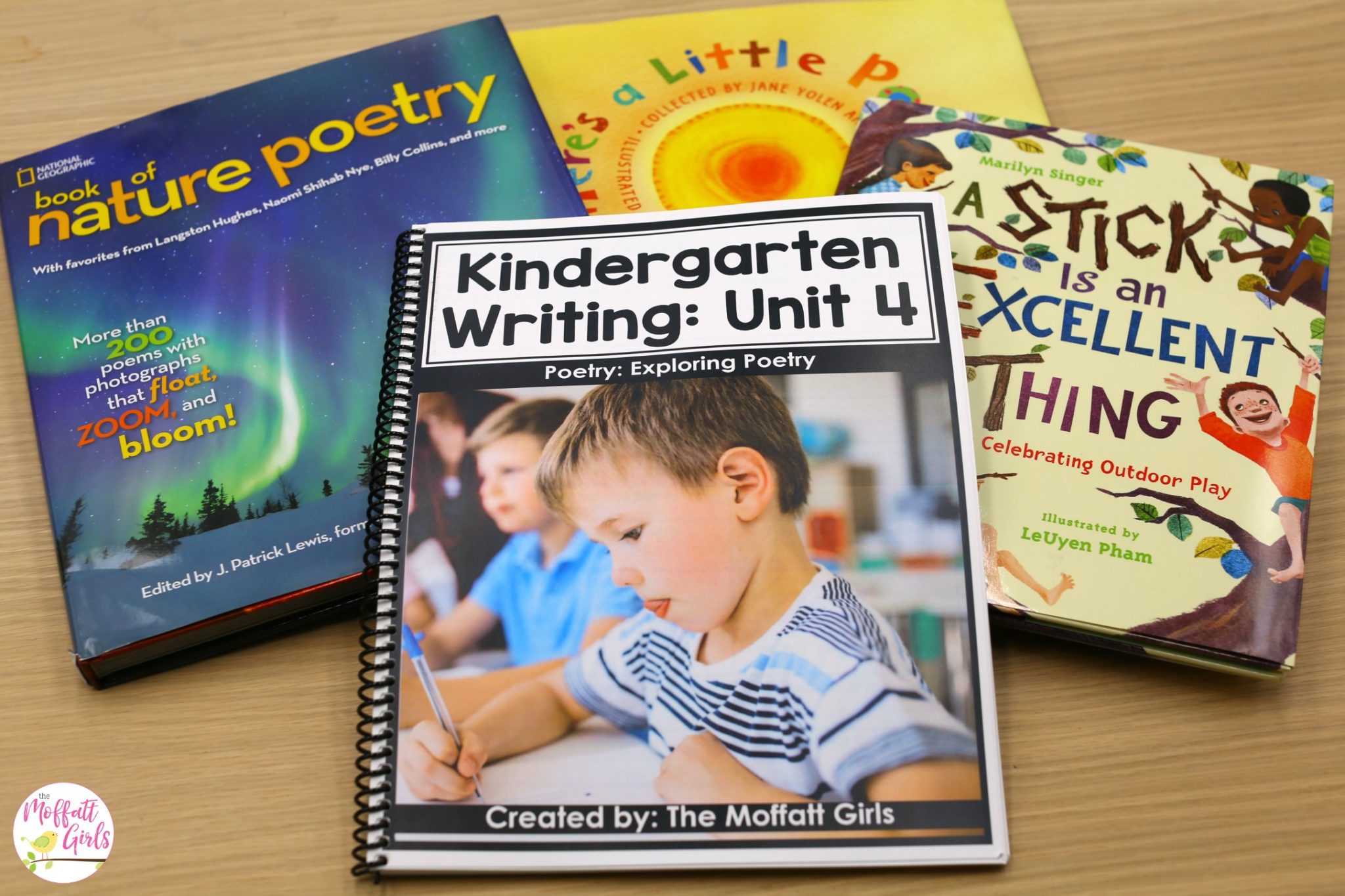
In Lesson 1, we introduce mentor texts.
Note- It is difficult for young writers to create rhyming poems. Remind students throughout the unit that poems can rhyme but do not need to. Most young students will find free verse poetry the easiest to write.
Read 2-4 varied mentor text poems using the text guide.
Discussion- What do you see in your mind when I read this poem? How does this poem make you feel? How are these poems different?
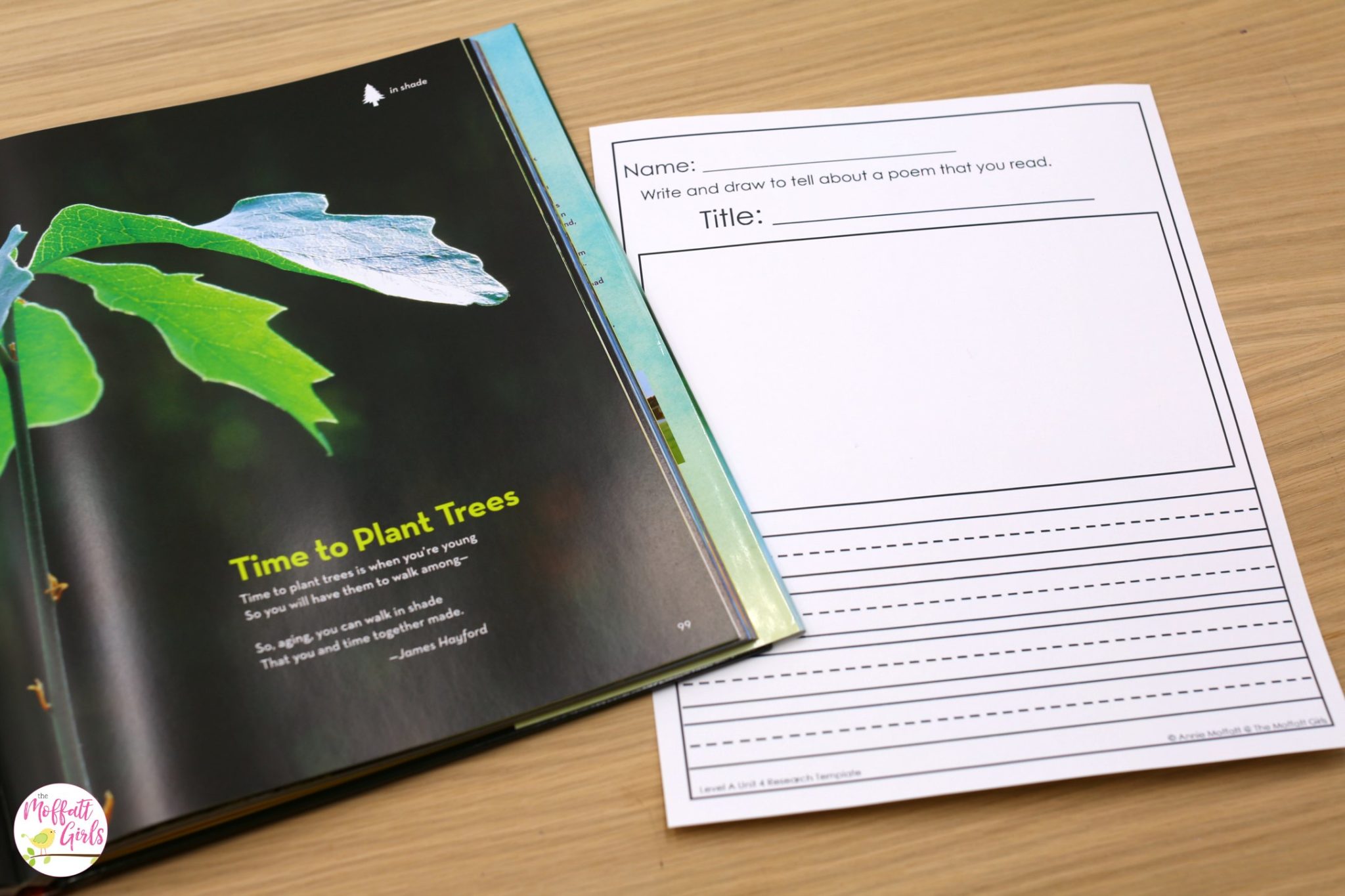
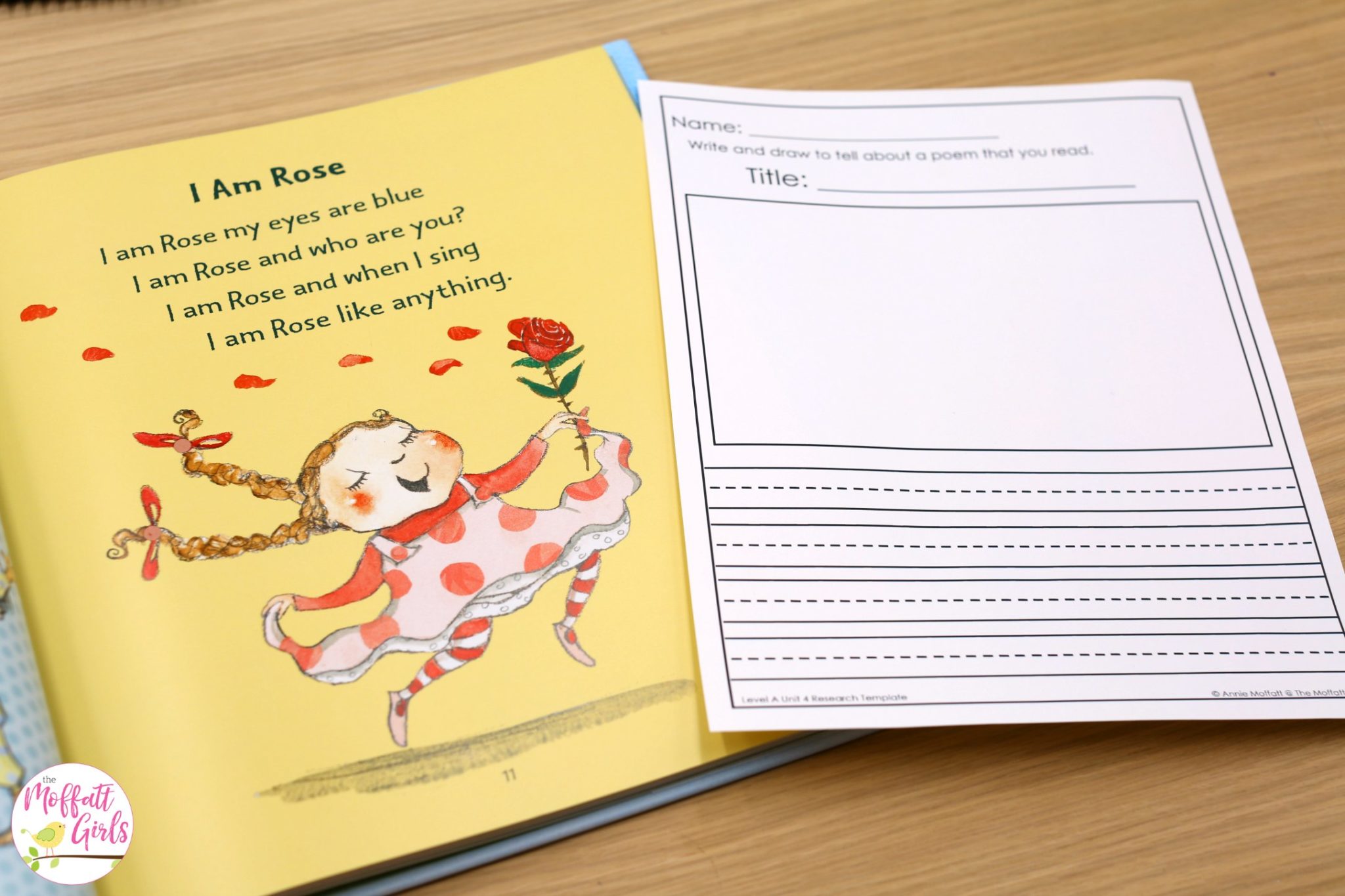
The mentor texts will be part of your Writers Library.
Writers Library
A Writers Library is a larger collection of on-topic texts that students can read and reference throughout the unit. Consider keeping these books in a special location where students can access them throughout the unit. These books will act as a reference for students who might struggle with writing non-realistic fiction stories.
Planning Stage:
During Lesson 2, students will start planning their poems. More specifically, students will talk about their senses to help them think about words they might use in our poems! Students can write about anything on their templates. They can write about popcorn, bubblegum, bacon or even spring! The ideas are endless.
Posters
Posters help students understand a little bit more about poetry.
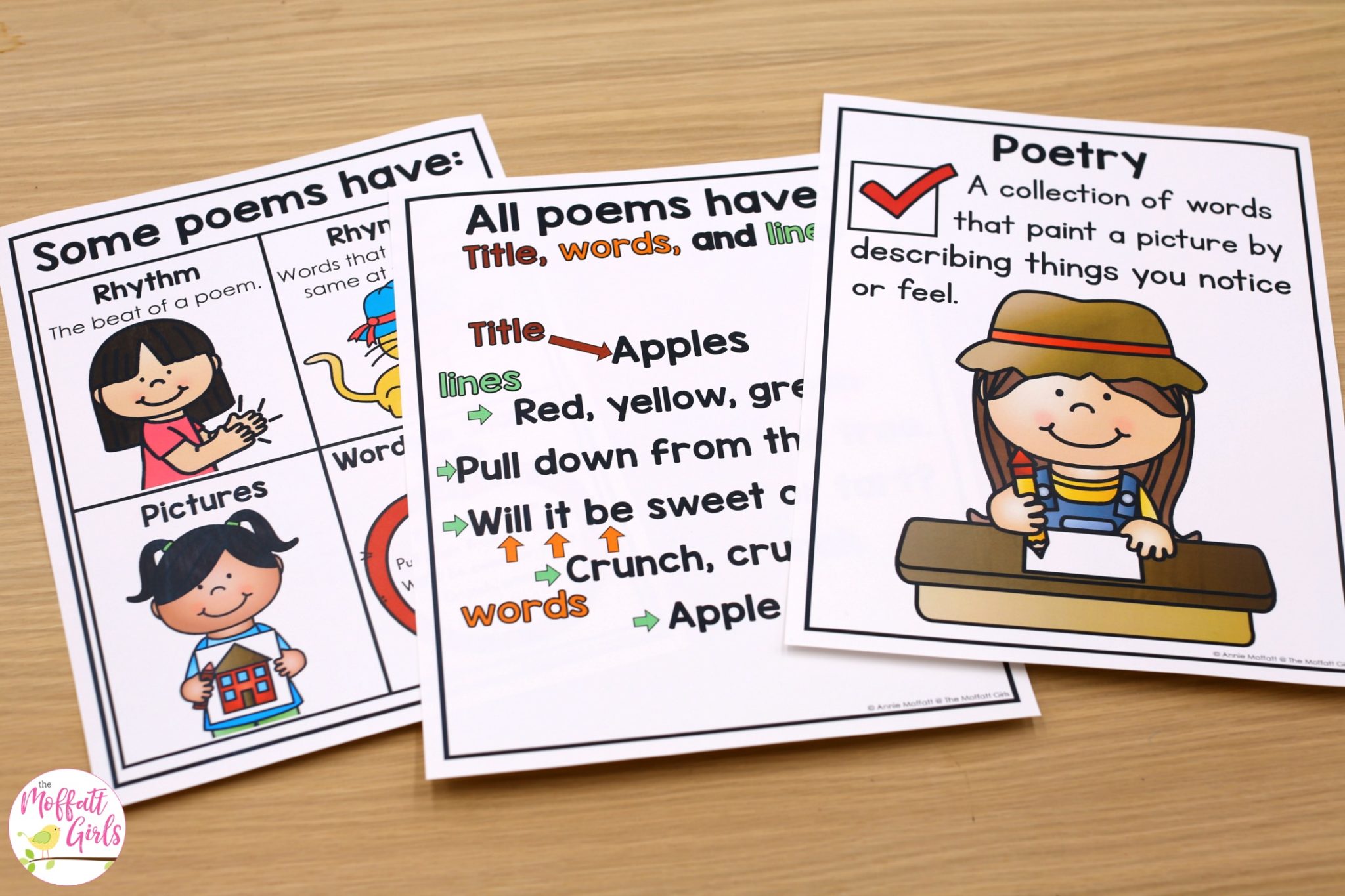
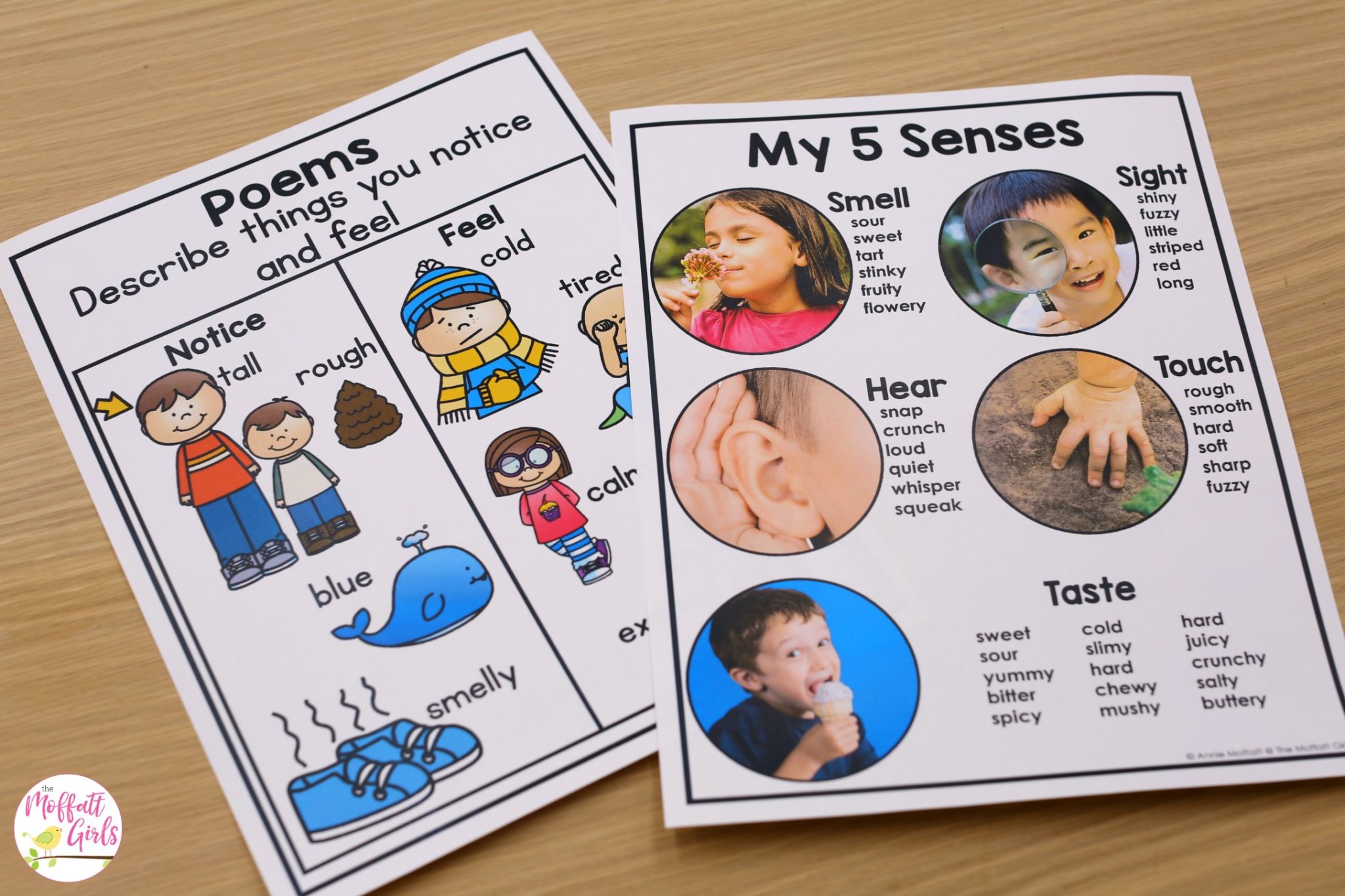
There are so many types of kindergarten writing poetry, and student will have opportunities to explore their creativity in this unit.
Students will also have access to the poetry resource ring with mini posters, if you choose to use them.
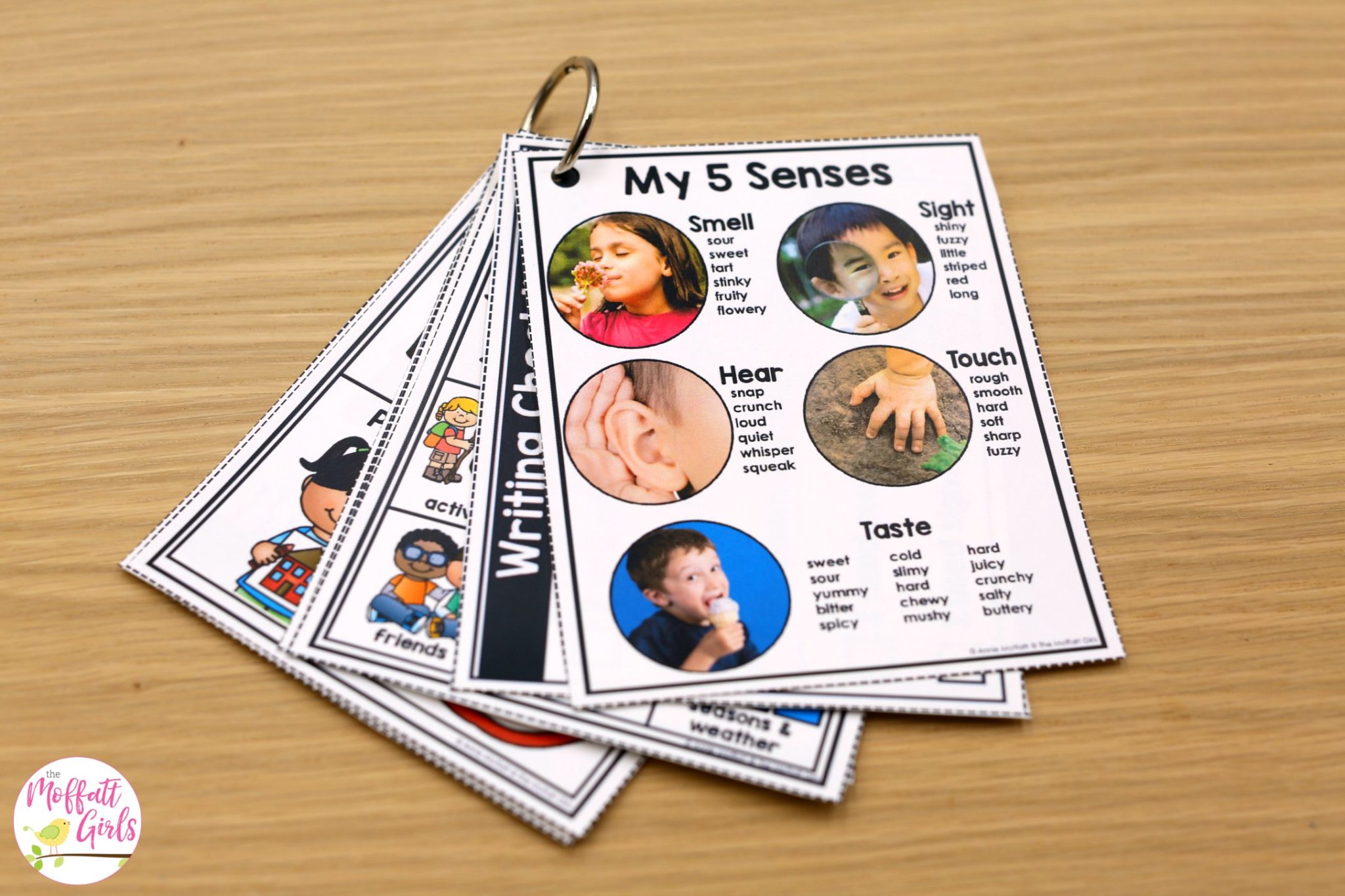
A Writer’s Checklist can be used during small groups to help students edit their writing once they get to that stage.
The Writing Process poster will help keep students on track as you move from lesson to lesson. This will highlight where they are in the writing process and what is coming next.
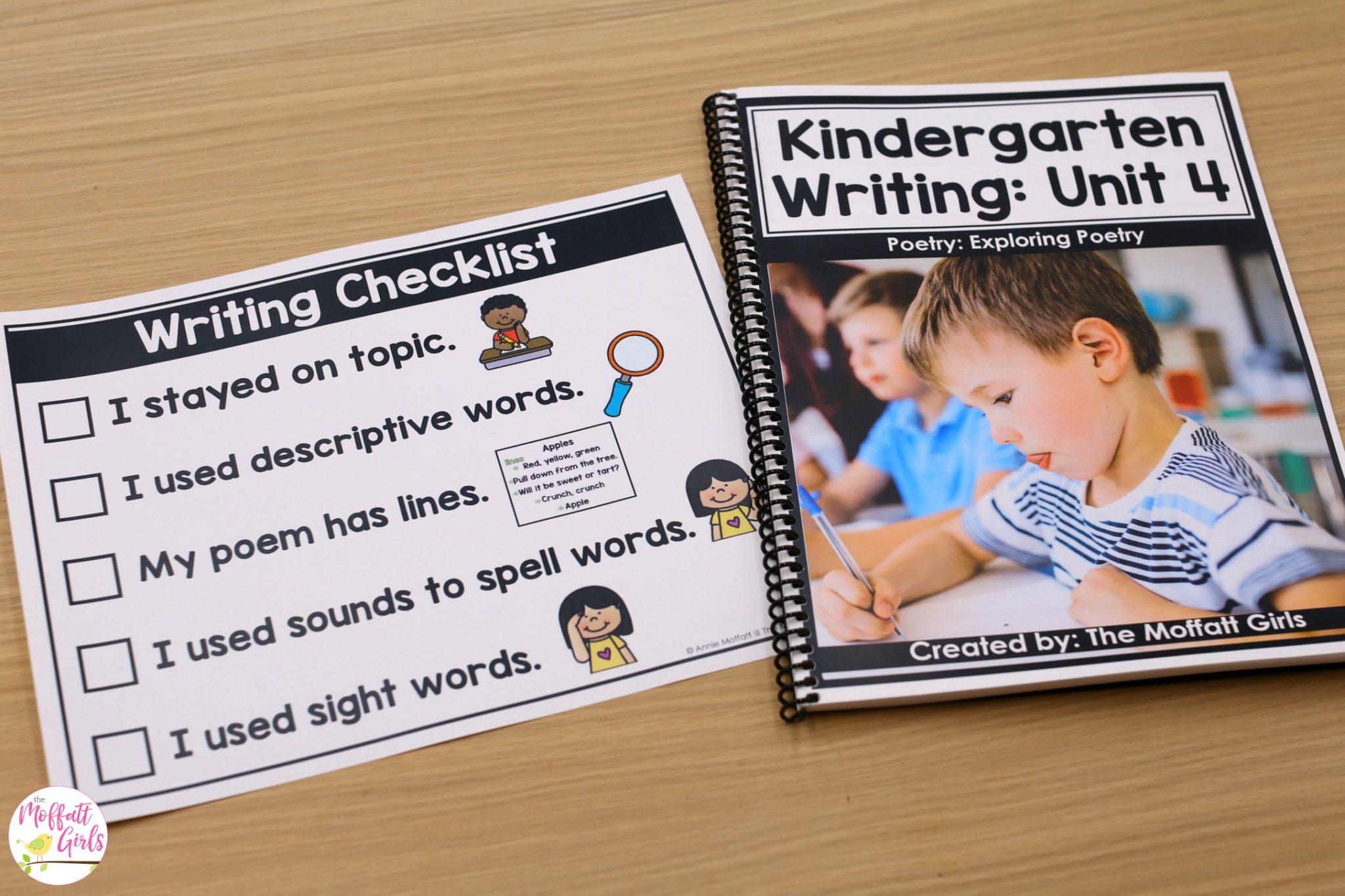
Templates
The Level A Writing Templates include multiple versions for differentiation in the class. Therefore, you can choose the template to fit each child’s needs.
Color Poems
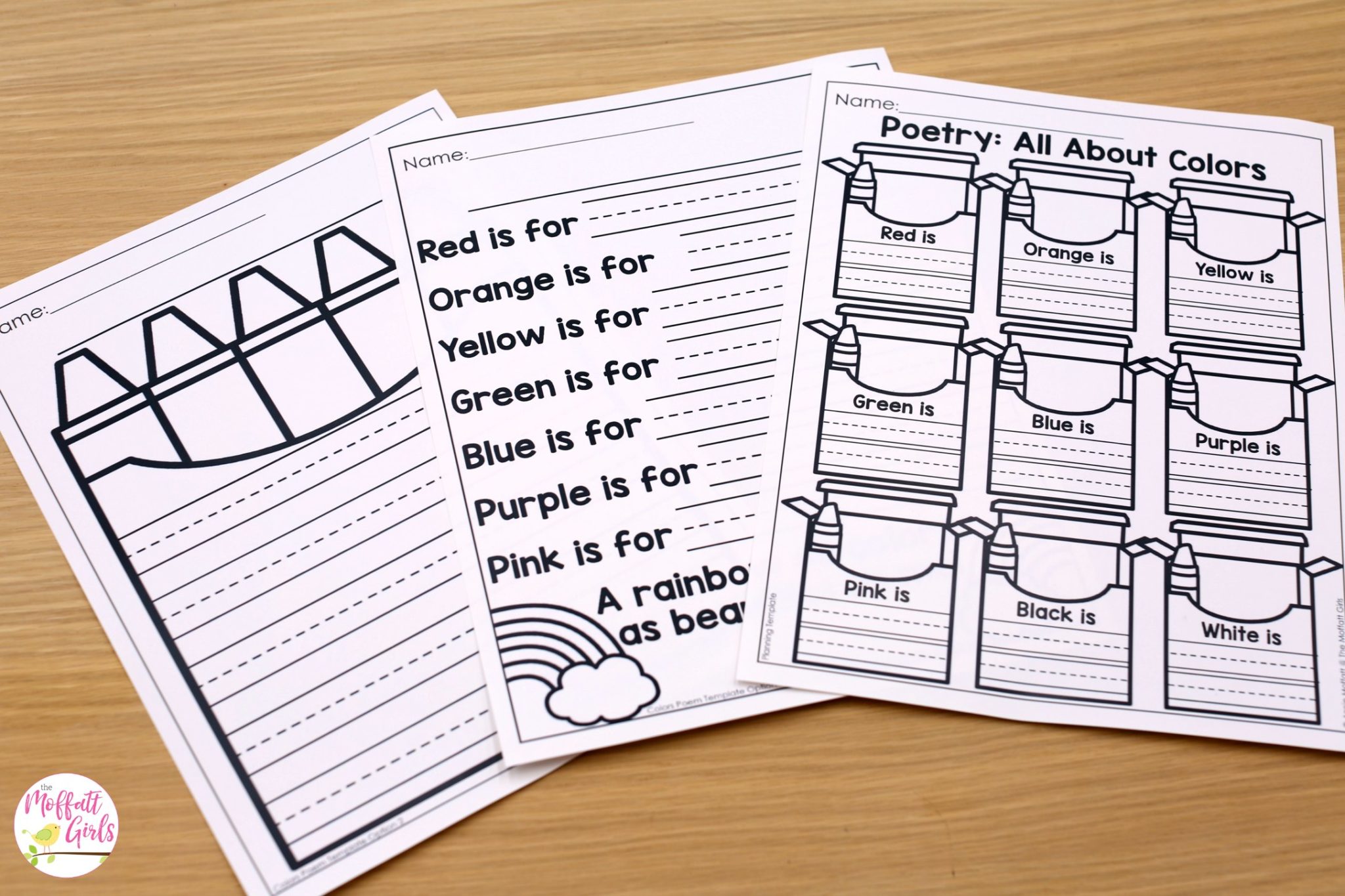
Fall Poems
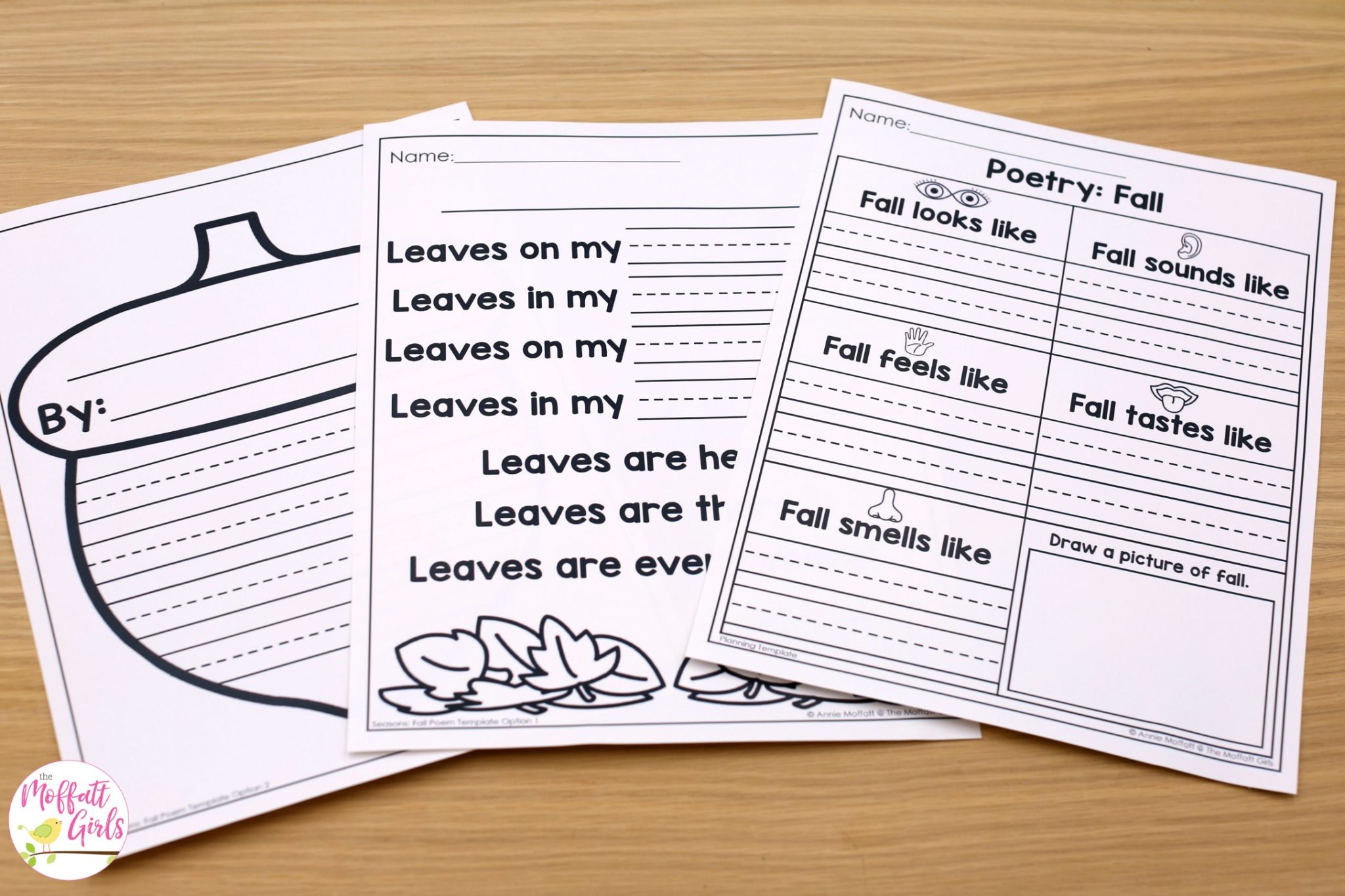
Winter Poems
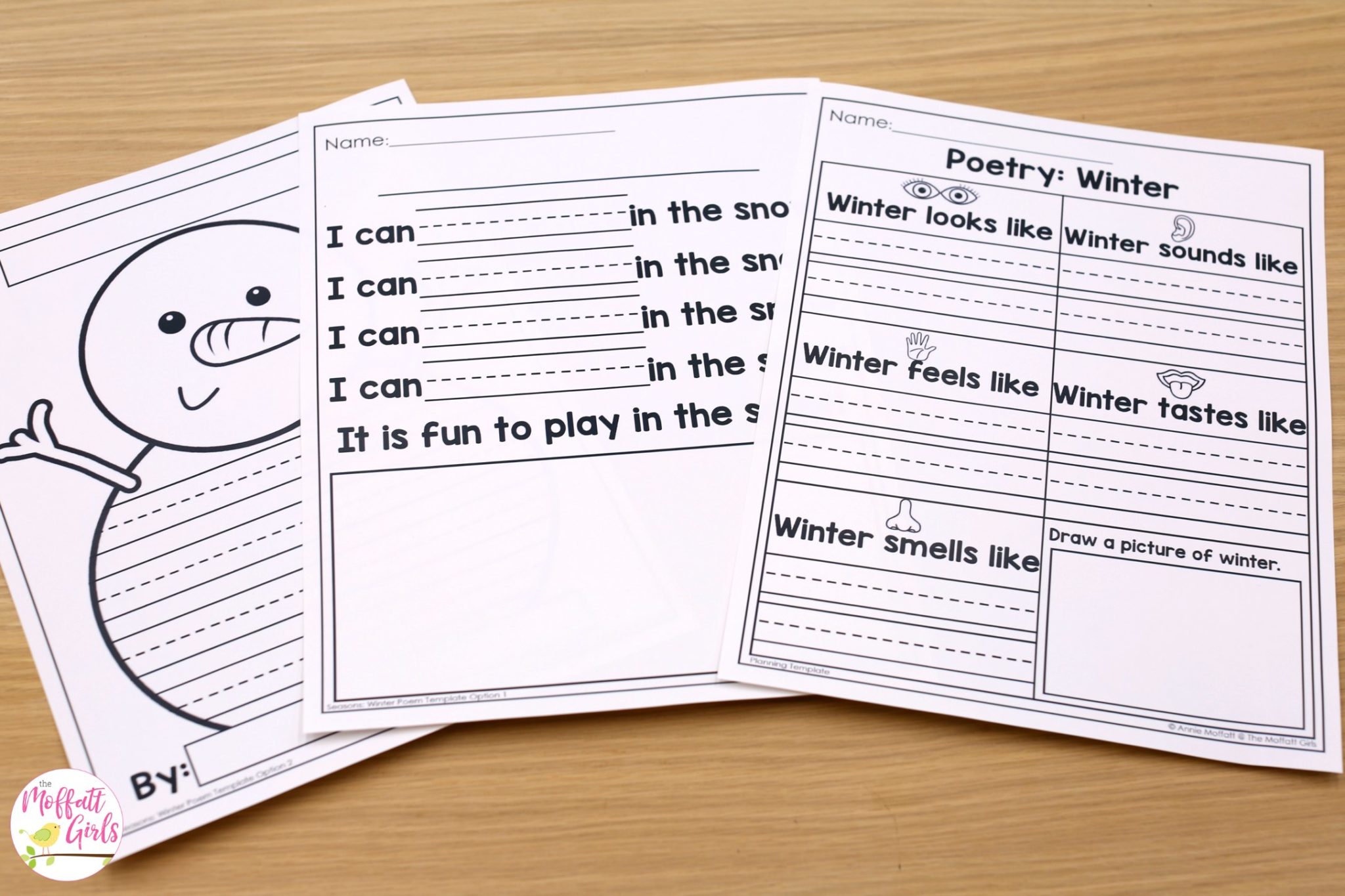
The activity below offers additional support to help students practice identifying adjectives to describe their senses.
Developmental Stages of Writing appropriate for Kindergarten:
While all students develop differently, most student writing progresses along these developmental writing stages. Therefore, use this chart to determine a student’s current writing level and identify next steps and goals. Keep in mind, it is normal for students to progress through some stages quickly and linger at others.
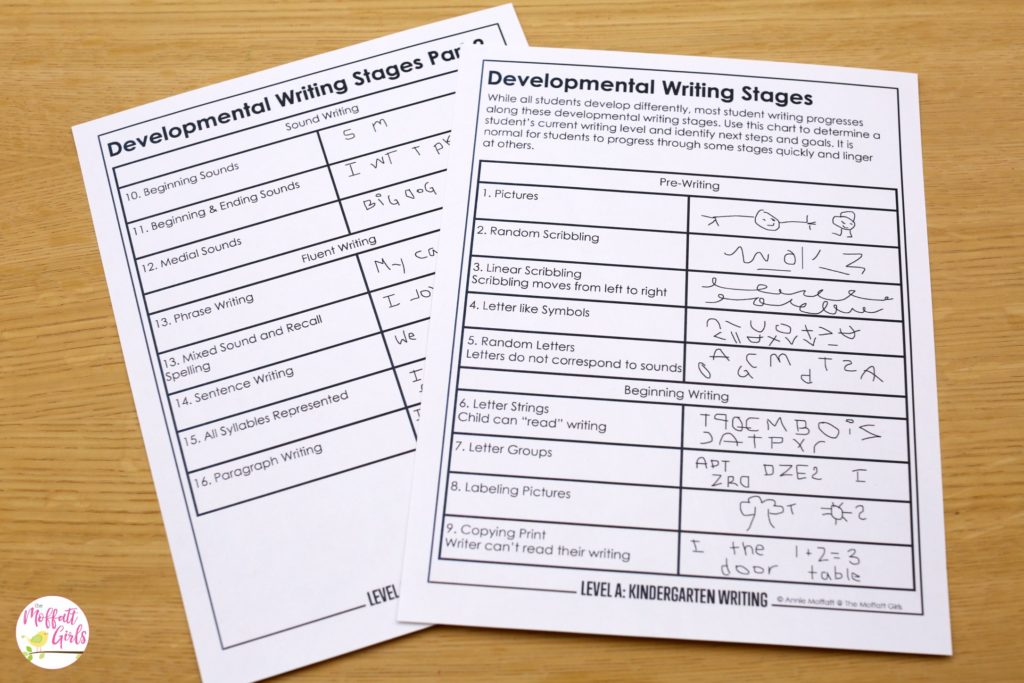
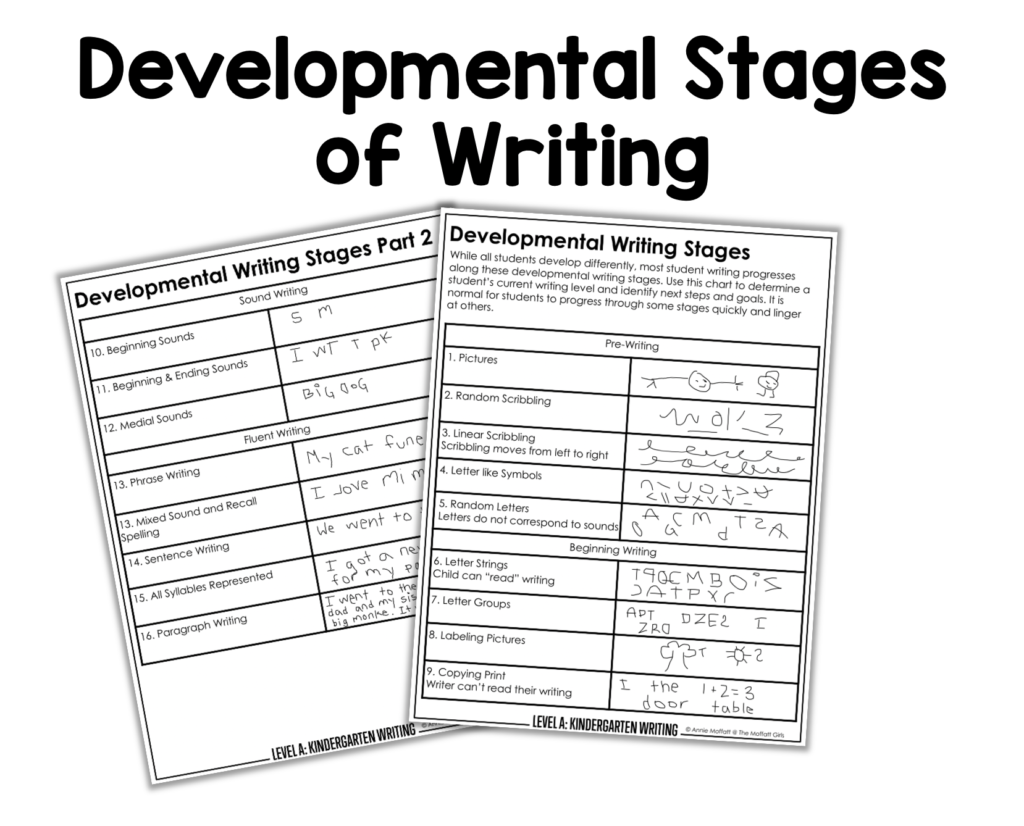
- Pre-Writing Stage:
- Pictures
- Random Scribbling
- Linear Scribbling. Scribbling moves from left to right
- Letter-like Symbols
- Random Letters. Letters do not correspond to sounds.
- Beginning Writing Stage:
- Letter Strings- child can “read” writing.
- Letter Groups
- Labeling Pictures
- Copying Print (Writer can’t read their writing.
- Sound Writing:
- Beginning Sounds
- Beginning and Ending Sounds
- Medial Sounds
- Fluent Writing
- Phrase Writing
- Mixed Sound and Recall Spelling
- Sentence Writing
- All Syllables are Represented
- Paragraph Writing
Conferencing:
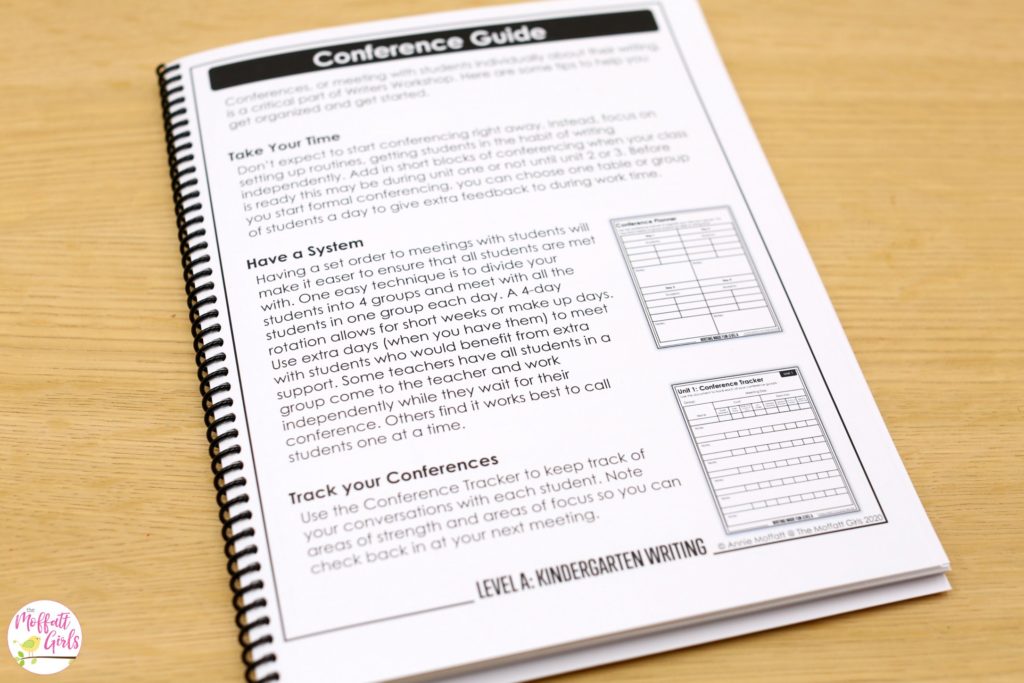
Conference is the heart of Writer’s Workshop! This is where you will work with your small groups and get a good feel of where they are in their writing. Certainly keep in mind that you’re conferring with them. It’s an opportunity to provide individualized instruction, assess students writing, reinforce skills taught during the mini-lessons.
Highlighting Strengths
When you confer with your students, you can identify their strengths and notice what they are doing well. Specifically, these moments are great opportunities to celebrate those moments and help build self-confidence. As a result, students’ writing stamina grows as students learn what they are doing correctly.
Improving Weaknesses
Conferencing also gives the chance for students to think about where they can improve their writing. Certainly you can easily make this your teaching point. You may want to pose questions during this time. For example, what else do good writers do? Suggestions could include adding more details. Or they might need to make sure their writing has a beginning, middle and end. Perhaps the student is working on labeling. Whatever the case, conferencing time is a time to set goals for something they can work on to improve their writing so they can become even better writers.
Scaffolding
Within this unit, there are multiple templates that you can use with your students to help them successfully write a poem. Here are just a few examples:
Rubrics:
Rubrics provide a structured way to measure student writing ability. With this in mind, use these rubrics to grade pre-unit on demands, post-unit on demands, and final writing pieces as needed. Most teachers find that grading all three writing pieces is not necessary.
Conveniently, there are several options of rubrics provided so you can select the rubric(s) that best fits your needs.
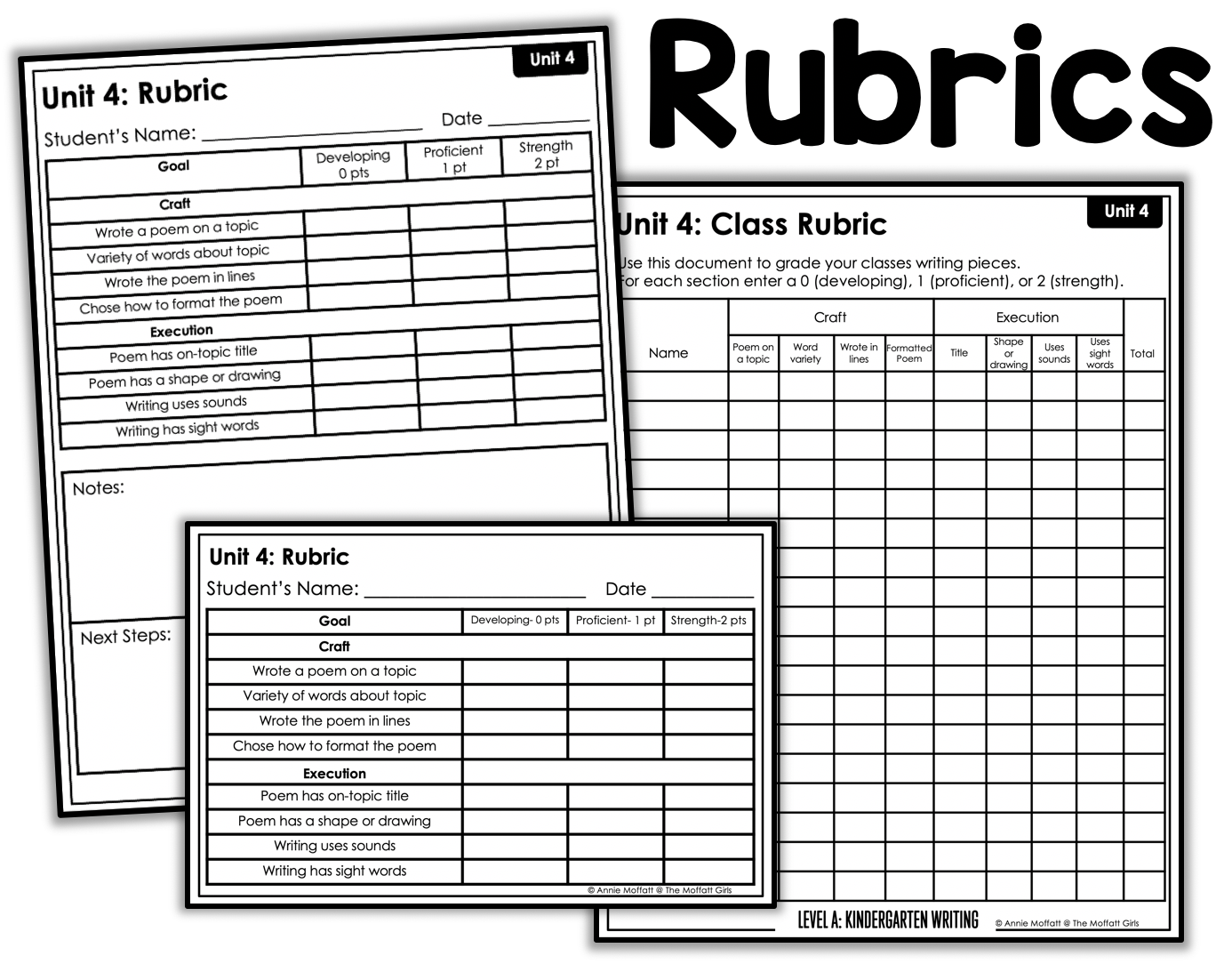
Publishing Party:
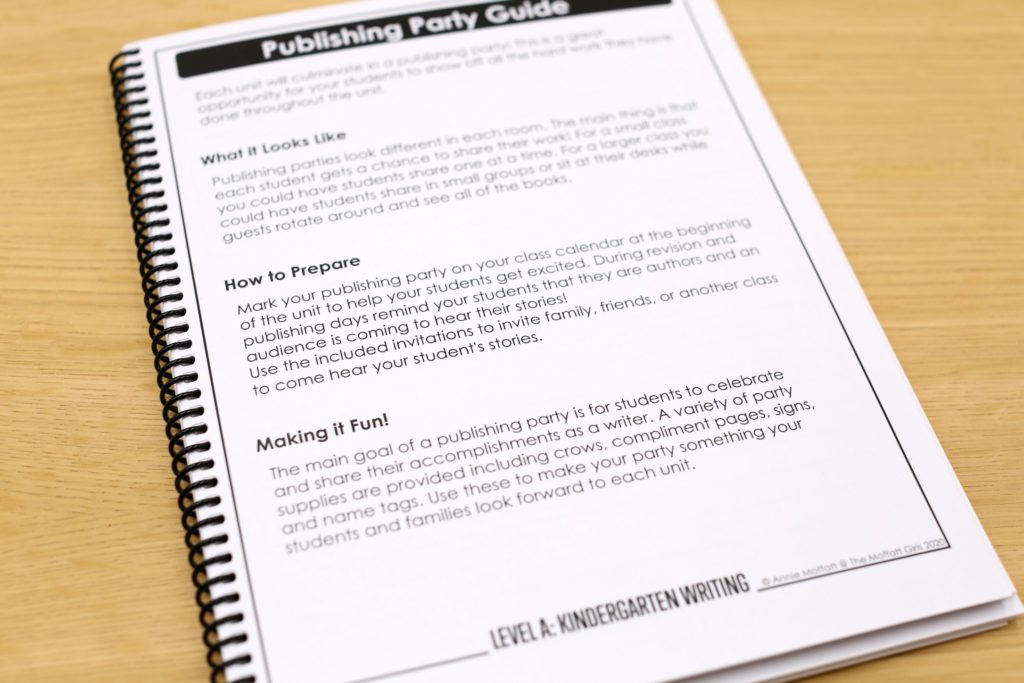
Now it’s time for students to share their writing in Lesson 22! This is such an important component to Writer’s Workshop, especially in Kindergarten! Finally, it’s time to have a Publishing Party! Overall for many students, writing non-realistic fiction stories is not all easy, and your students have worked hard to write three of them! Therefore, it’s time to celebrate their accomplishments!
Publishing parties look different in each room. Nonetheless, the important thing is that each student gets a chance to share their work! For a small class you could have students share one at a time. On the other hand, for a larger class you could have students share in small groups or sit at their desks while guests rotate around and see all of the books.
Plan Ahead:
Mark your publishing party on your class calendar at the beginning of the unit to help your students get excited. Additionally, during revision and publishing days remind your students that they are authors and an audience is coming to hear their stories!
The main goal of a publishing party is for students to celebrate and share their accomplishments as a writer. A variety of party supplies and props are provided including crowns, compliment pages, signs, party invitations, an “I’m an Author” banner and name tags. Use these to make your party something your students and families look forward to each unit. Let’s get this party started!
For your convenience, you can use the included invitations to invite family, friends, or another class to come hear your student’s stories.
I hope this post was helpful to you as you set out to implement kindergarten writing workshop this year!
Be sure to join my private Facebook group with other likeminded educators and homeschool families that are using Moffatt Girl Curriculum!
Happy Teaching!
The post Kindergarten Writing: Poetry appeared first on Moffatt Girls.

